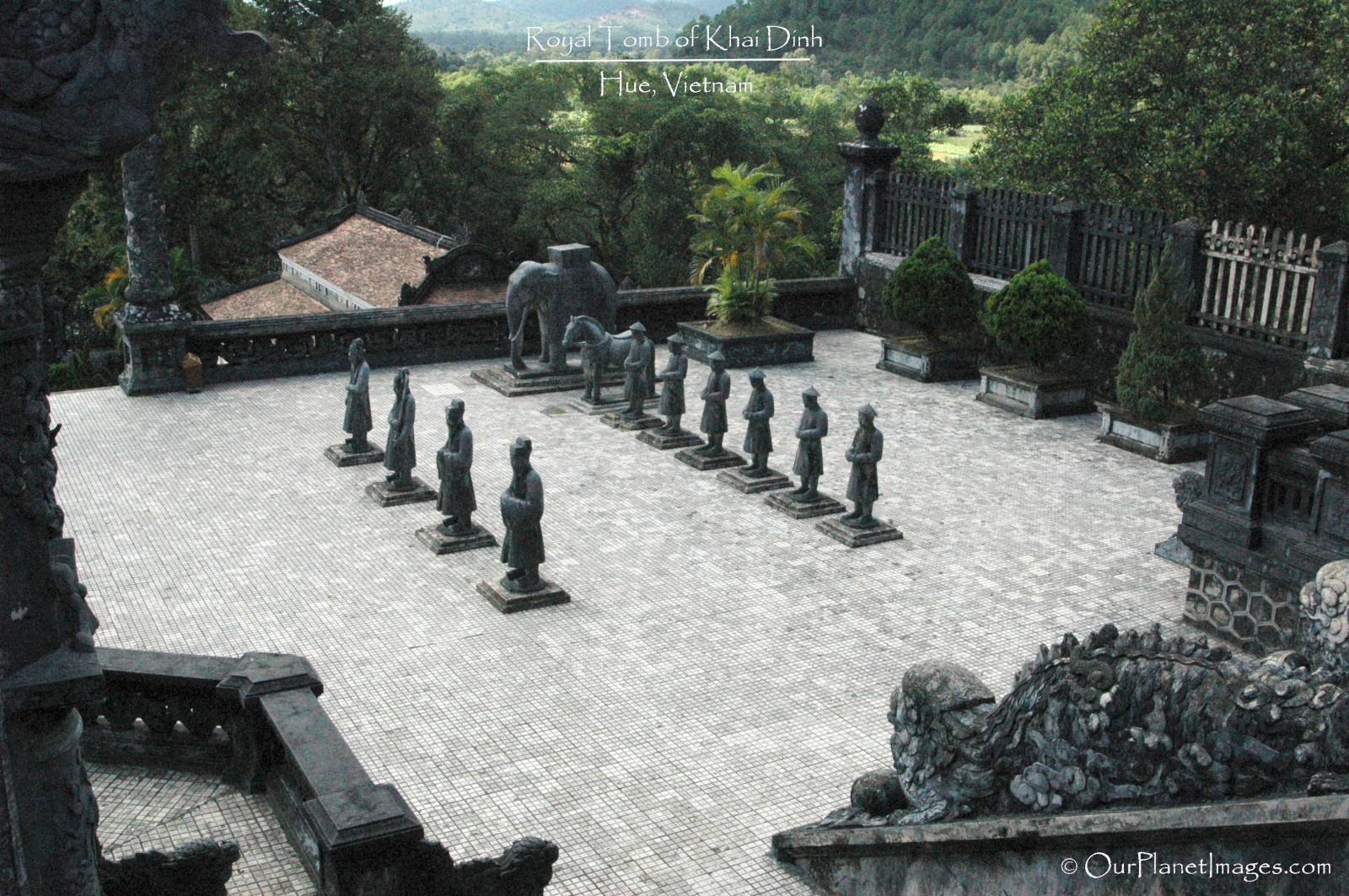Khai Dinh was the 12th Emperor of the Nguyen Dynasty in Vietnam. The Royal Tomb of Khai Dinh is located on the Chau Chu Mountain near Hue, Vietnam. It was built from 1920 to 1931 taking 11 years to complete.
The tomb complex is built on the hillside and is separated into 5 levels leading up the hillside. Each level is progressively higher on the hill and is accessed by climbing up a set of stairs. It reminded me of the concept of growing rice on a hillside with terraces being built for each level.
The first set of stair goes from the street level to the administration building. The administration building is shown in the photo below and is the only building in the complex that is built in the typical Vietnamese style. The rest of the complex is covered in blackened concrete giving the complex a glum feeling. Each set of stair throughout the complex are decorated with a dragon like creature.
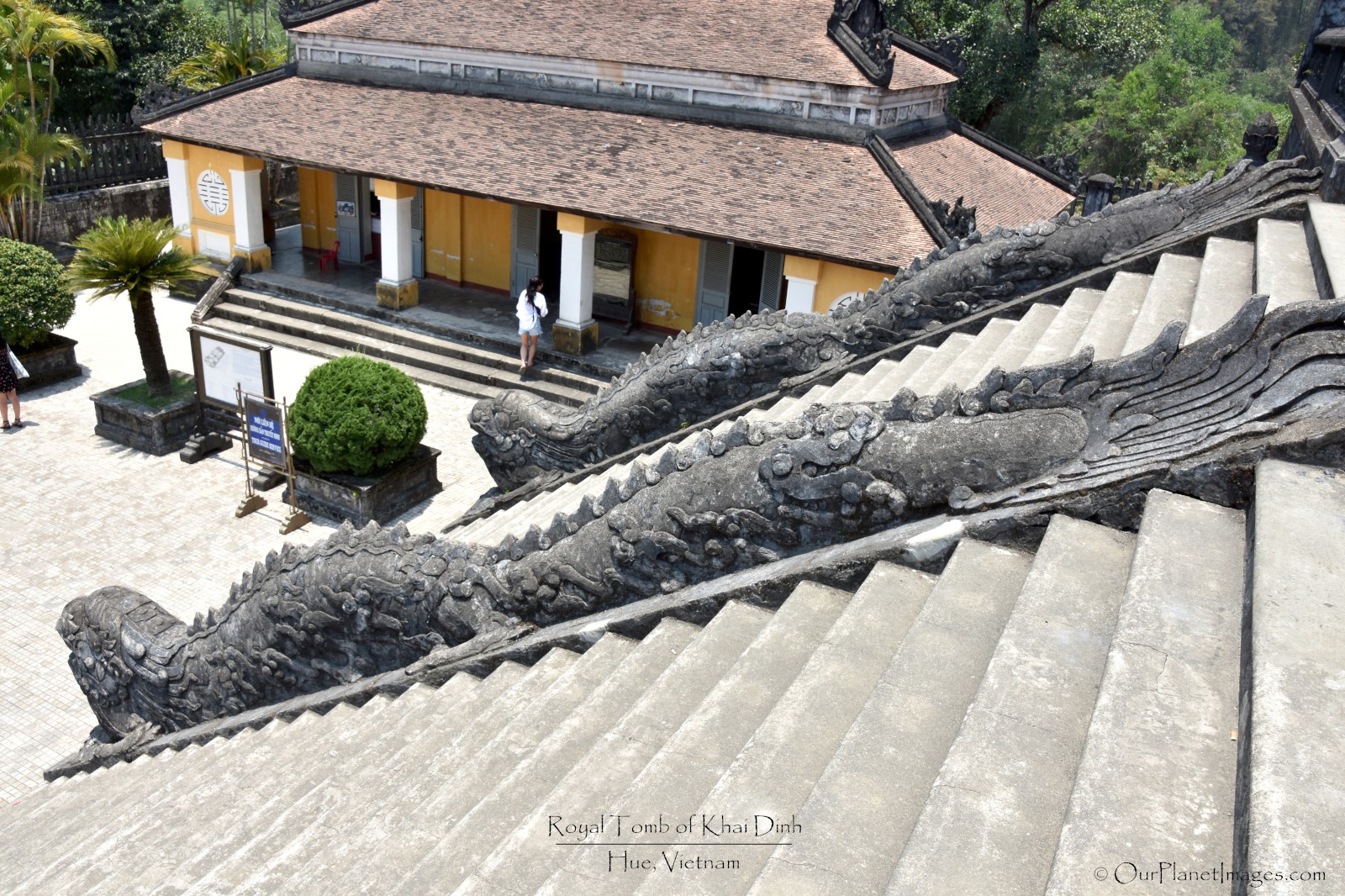
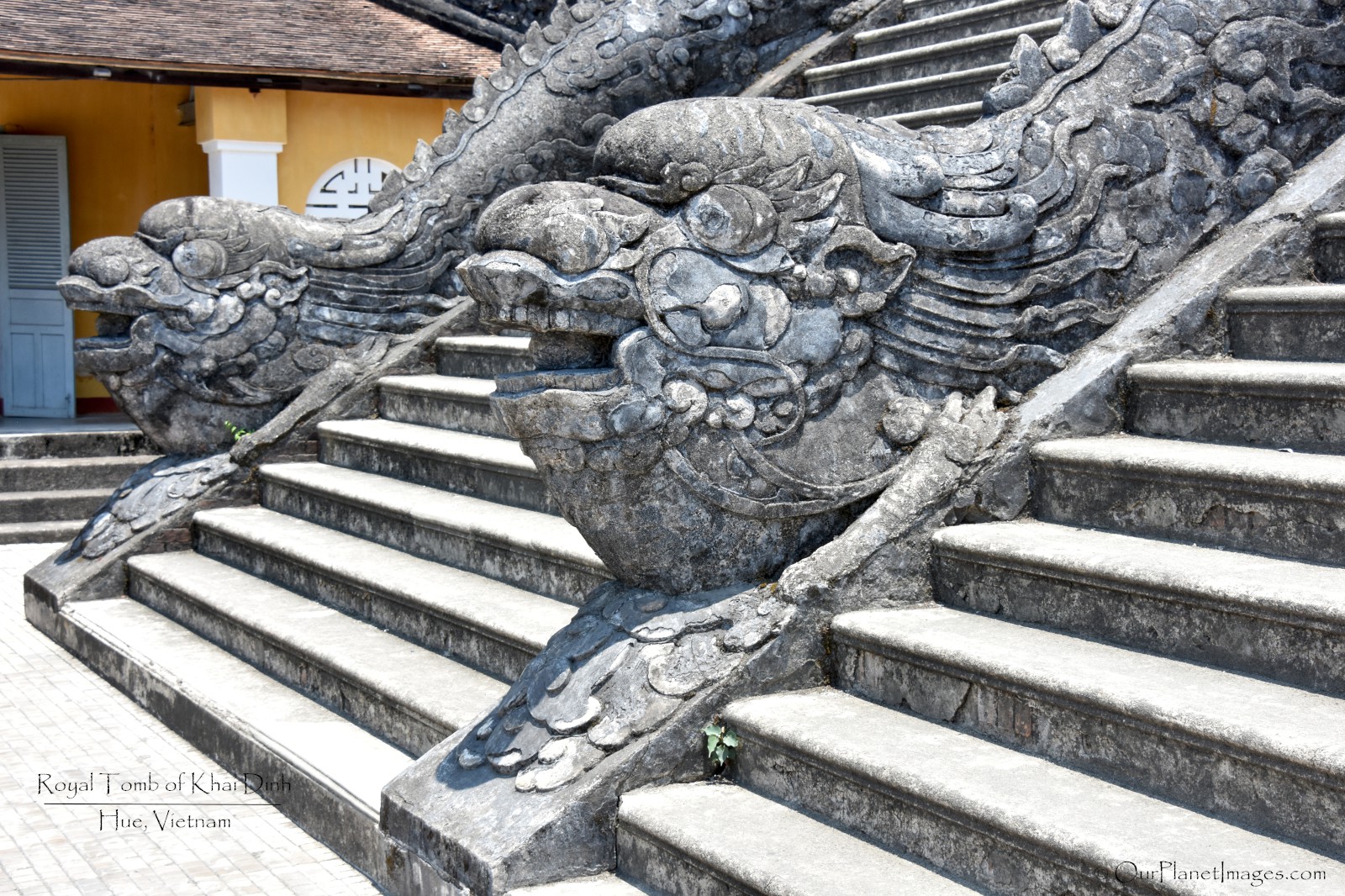
The second set of stairs leads from the administration level to the Honor Courtyard level. Entering the Honor Courtyard is through a three section decorated stone entrance gateway.
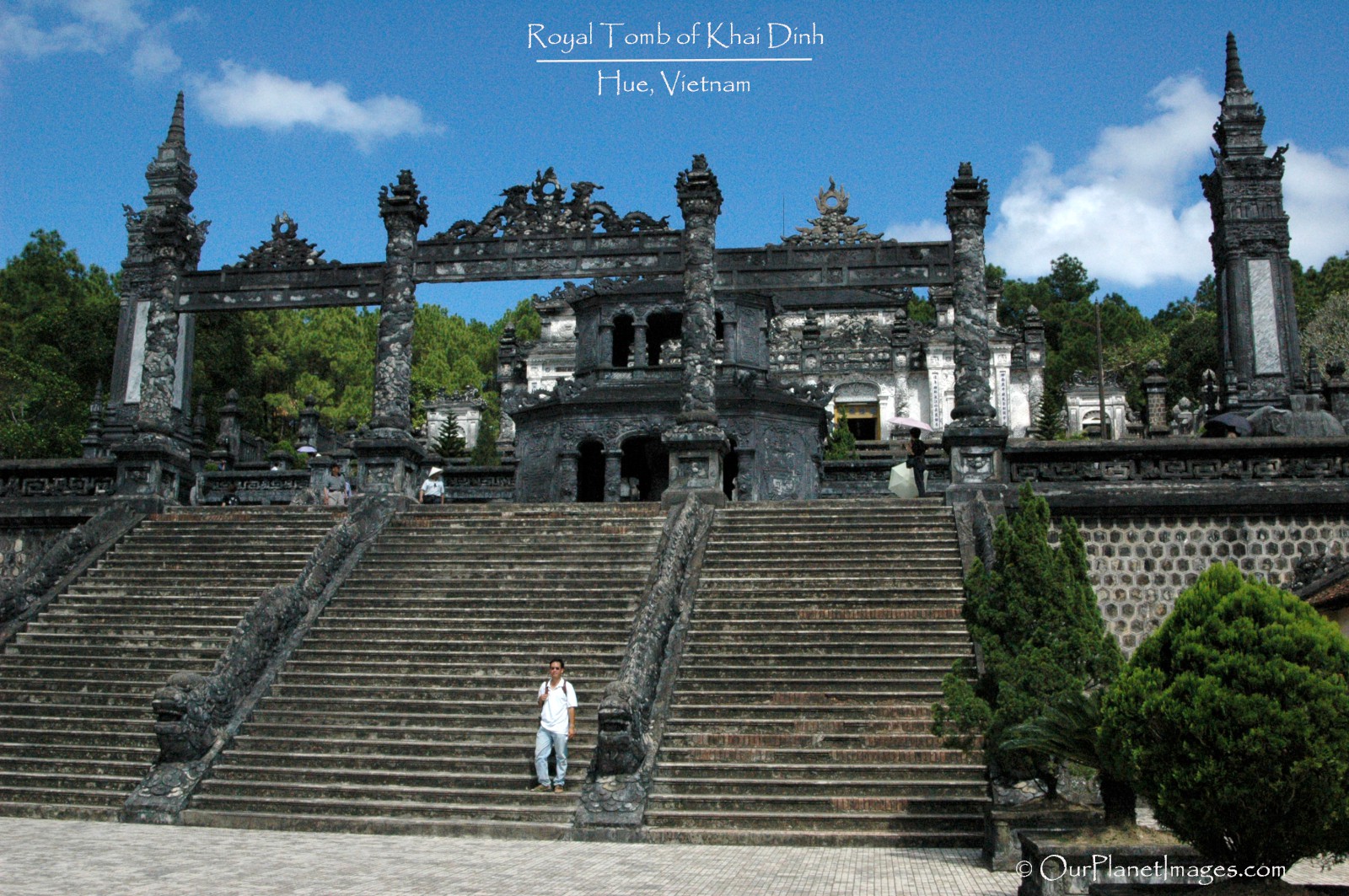
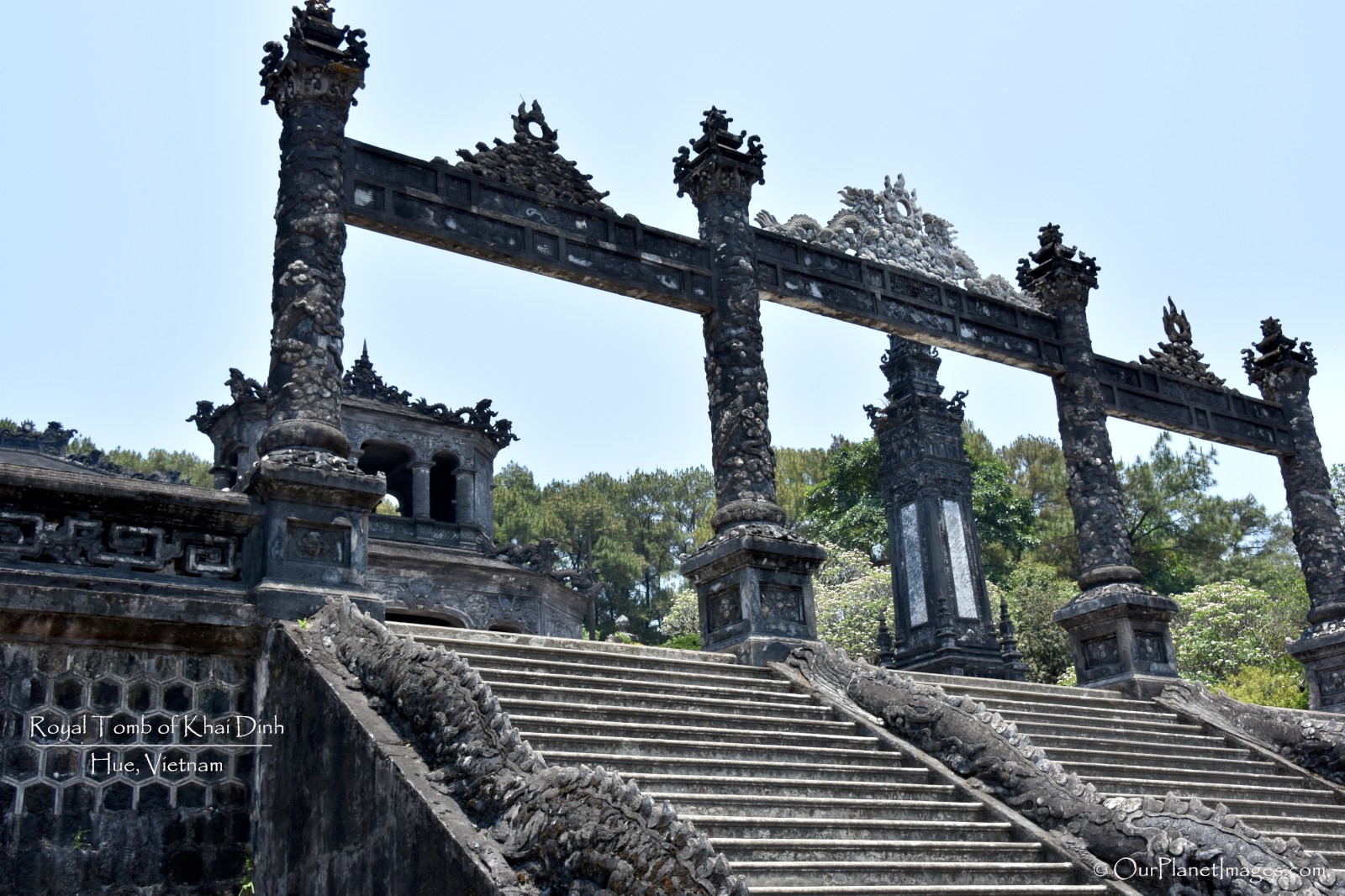
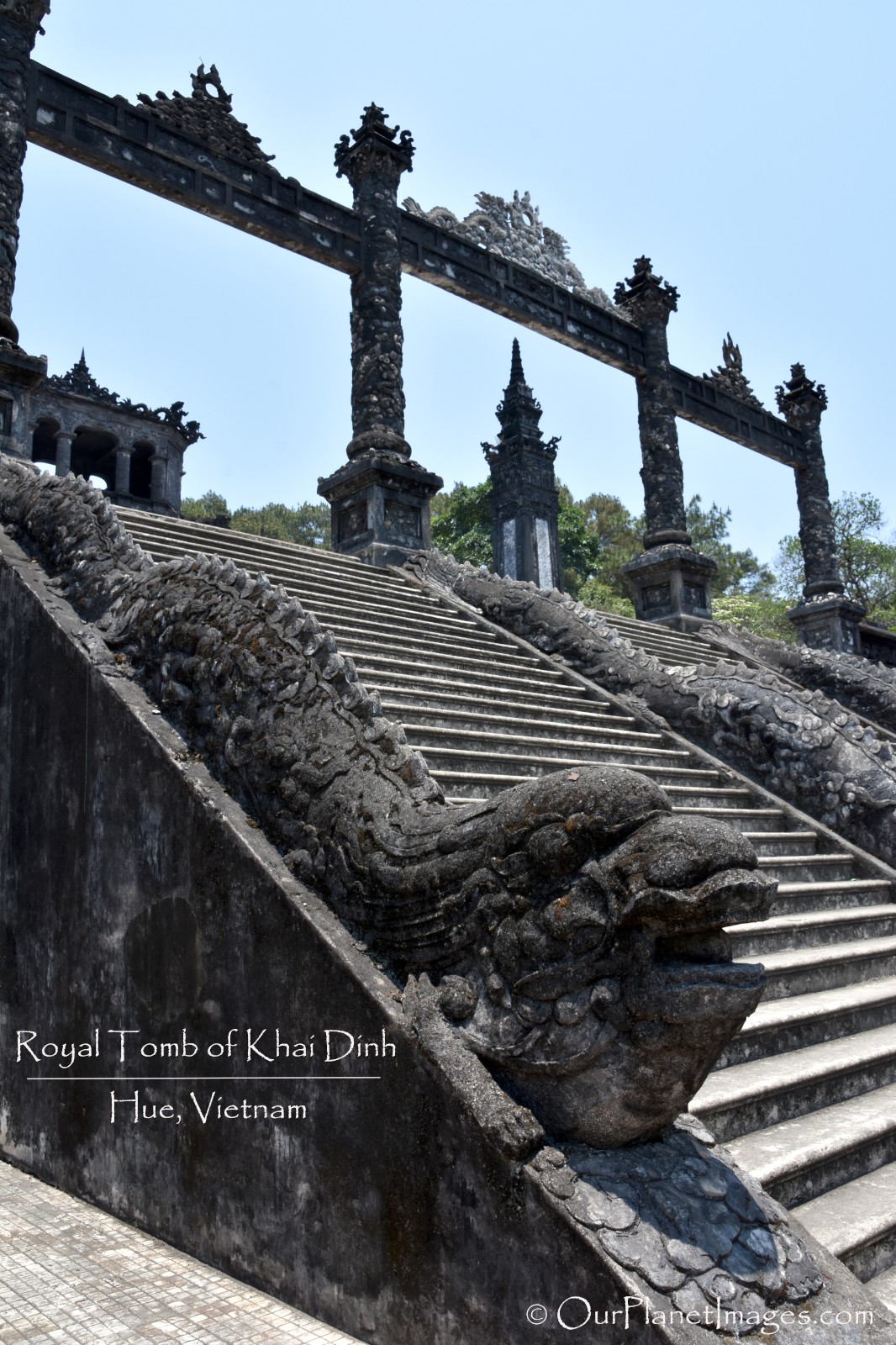
The Honor Courtyard is the largest level with stone sculptures of soldiers, elephants, horses, obelisks and an octagon pavilion. Everything in the honor courtyard is completely symmetrical. On each side of the entrance gateway are 10 stone sculptures, a stone elephant and a stone horse.
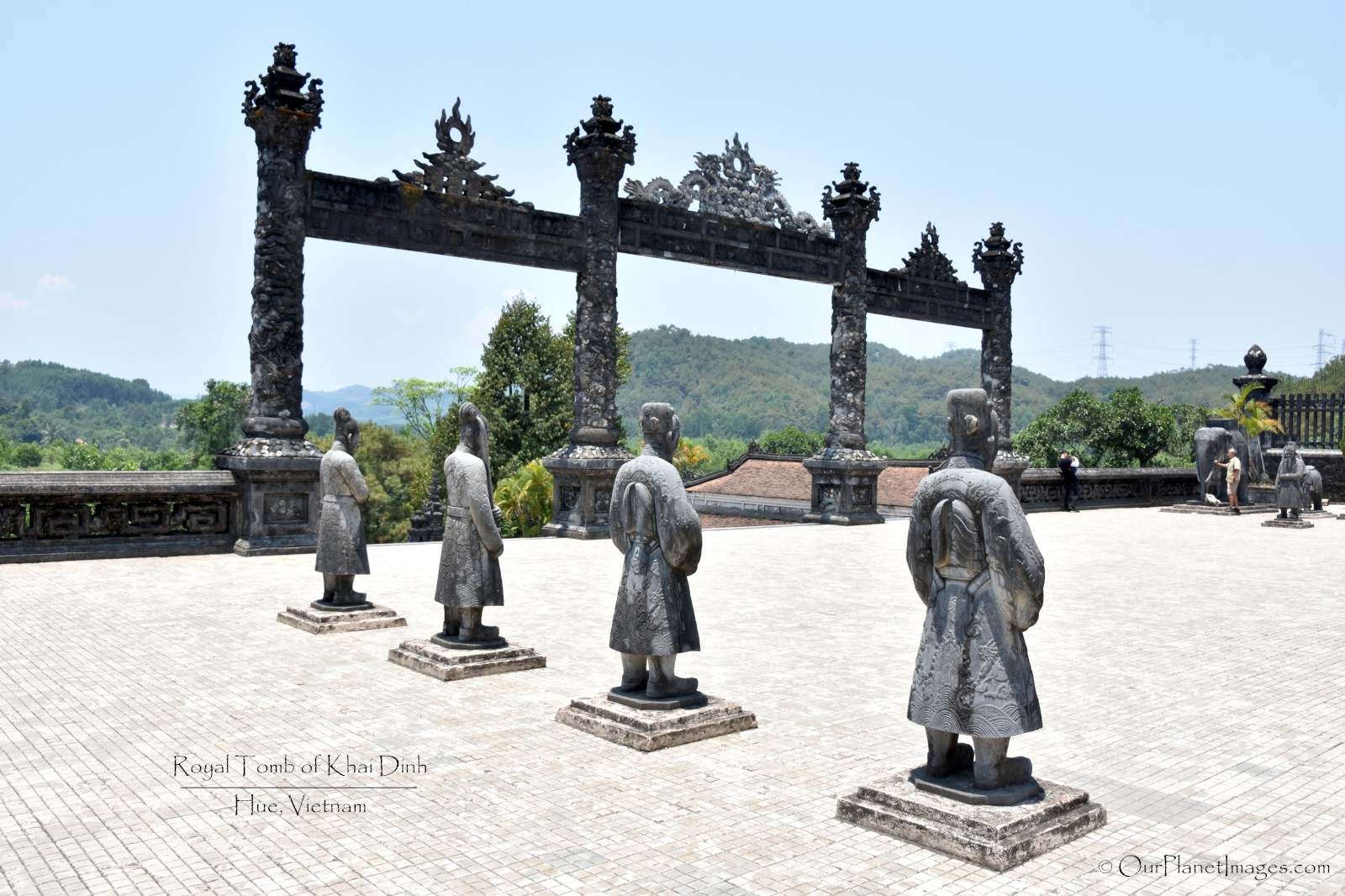
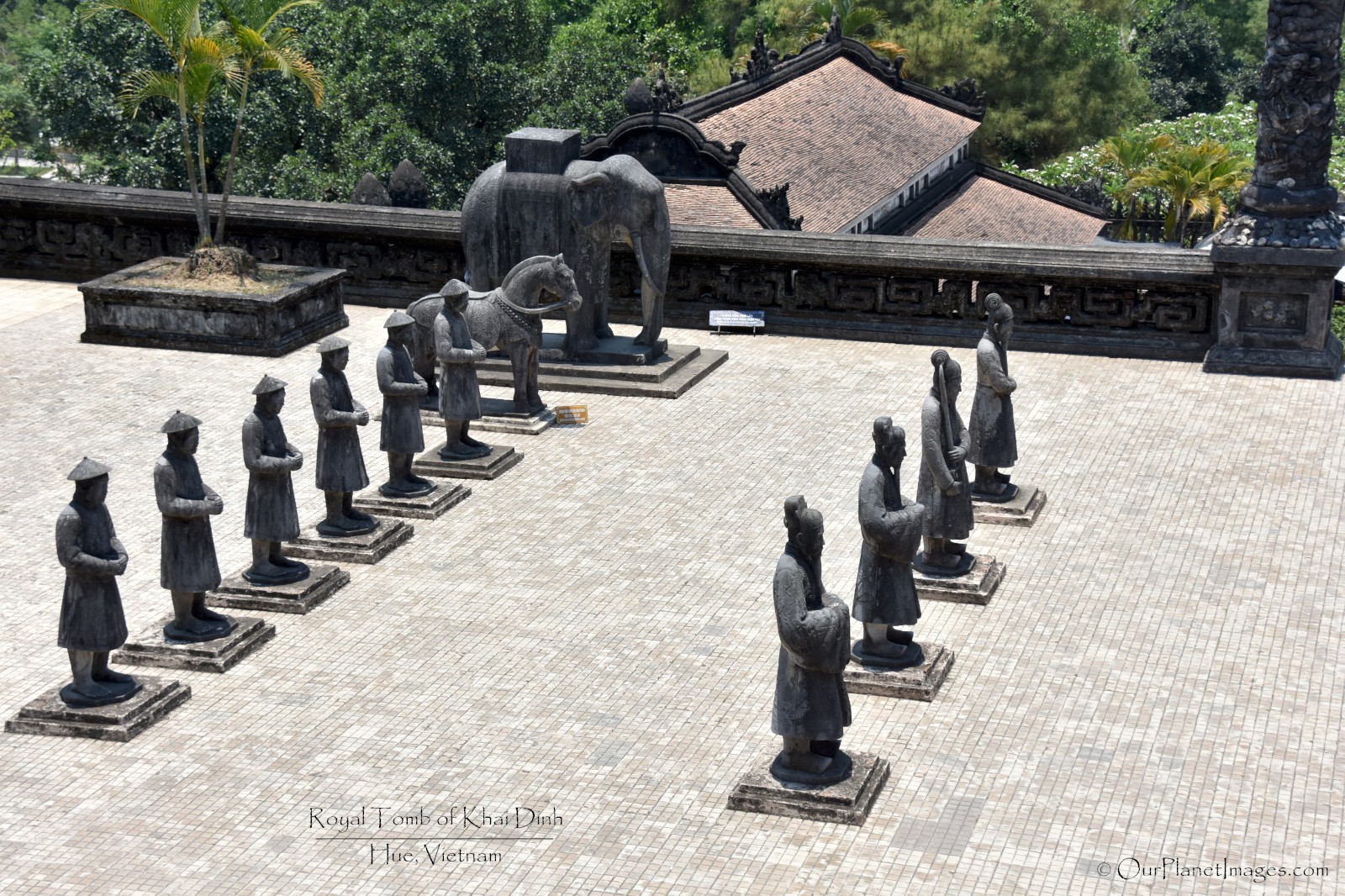

The stone sculptures seem to be the royal guards for the mausoleum as they stand guard allowing people to pass between them but ready to protect if needed. These sculptures reminded me of the terra cotta warriors in China. Just like the terra cotta warriors, the statures are unique and seem to have different purposes.
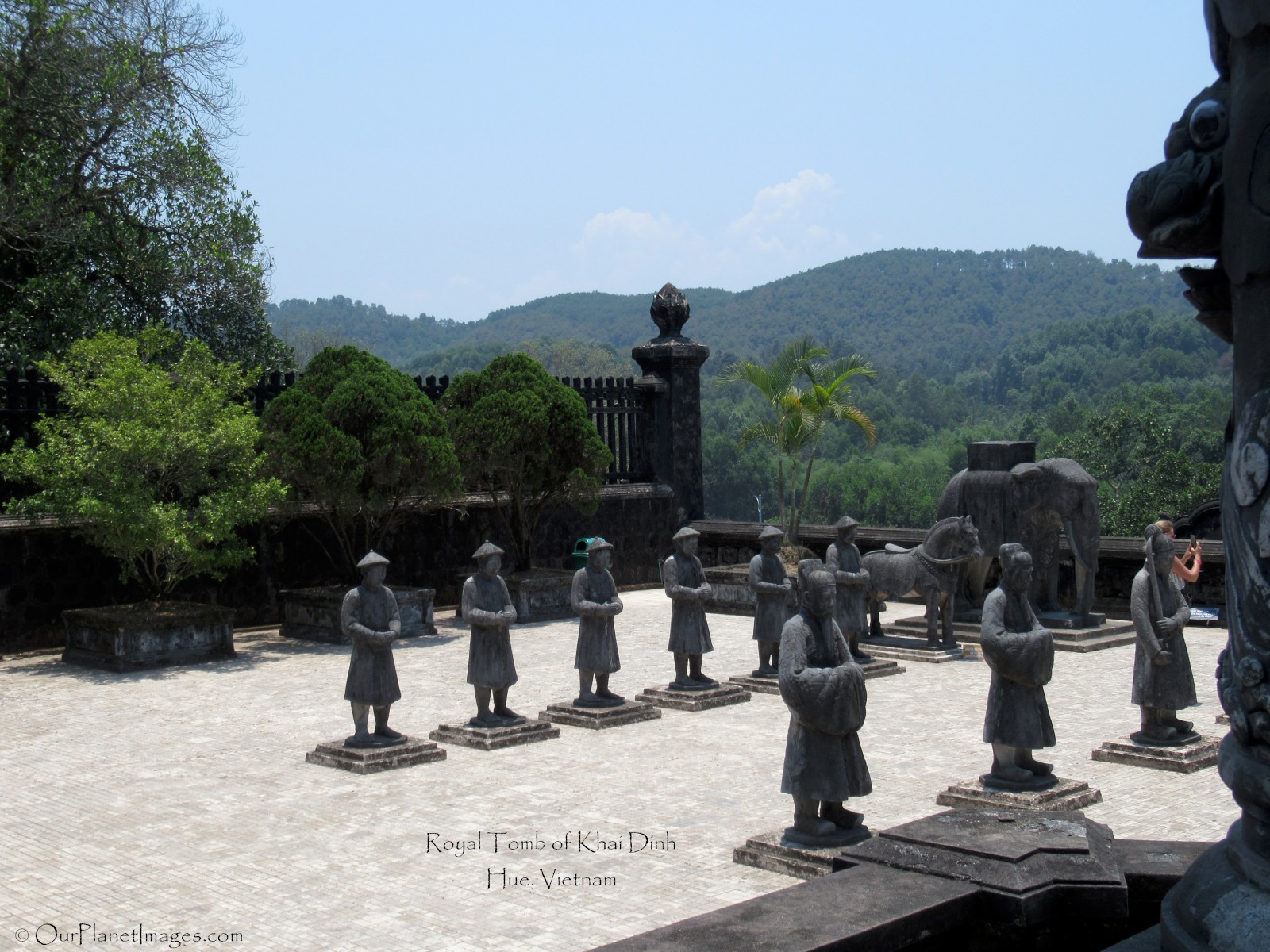
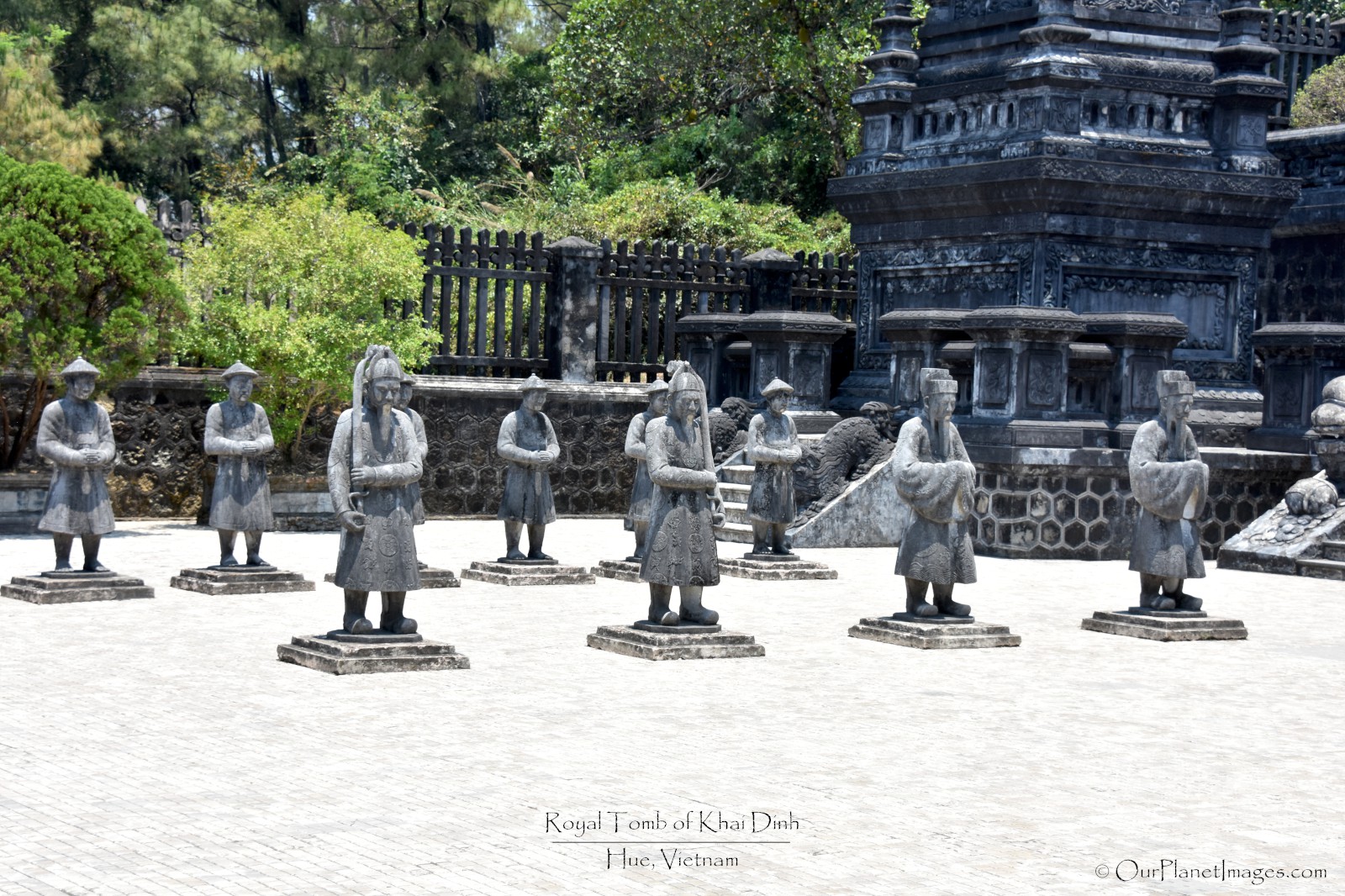
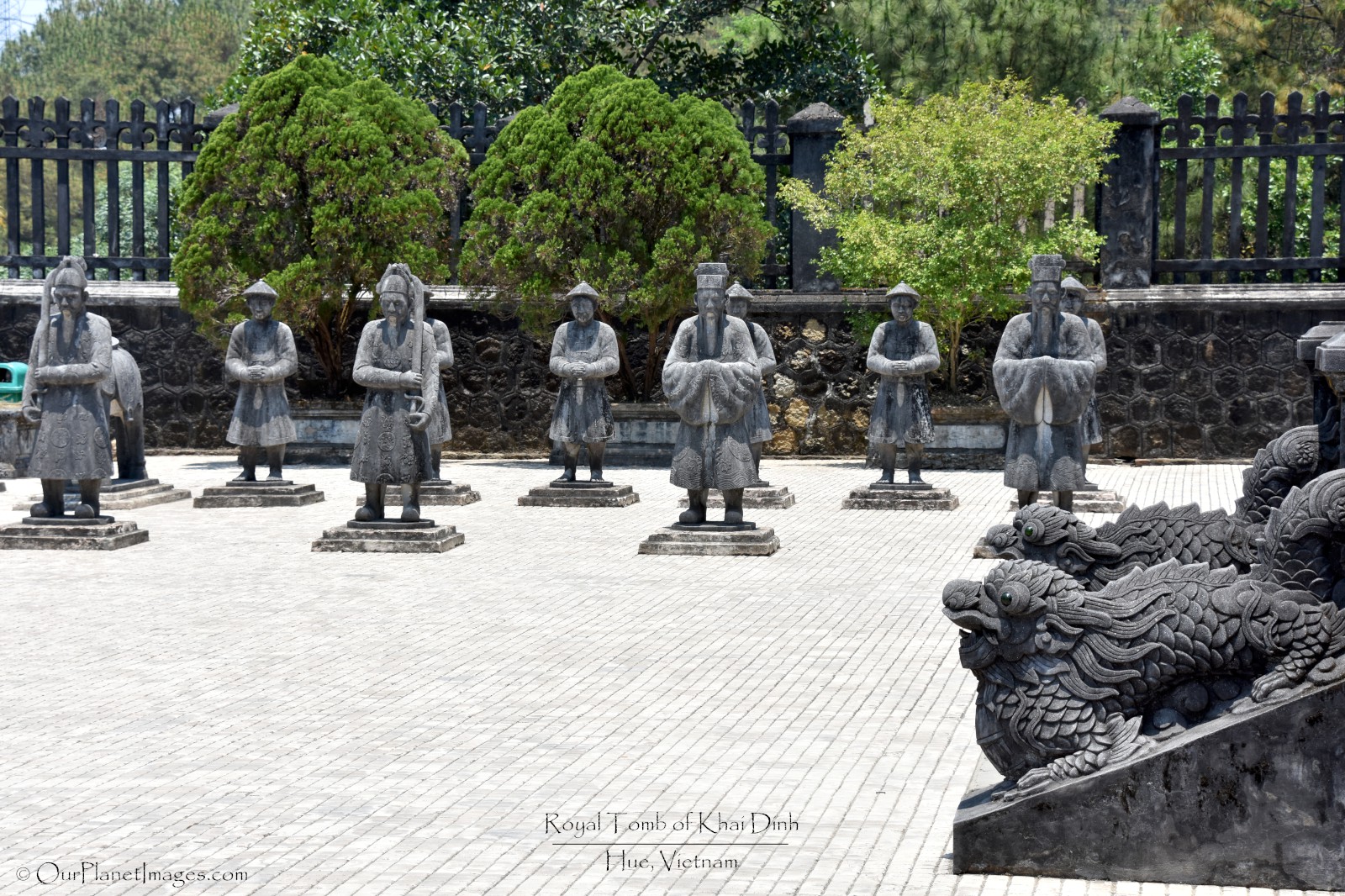

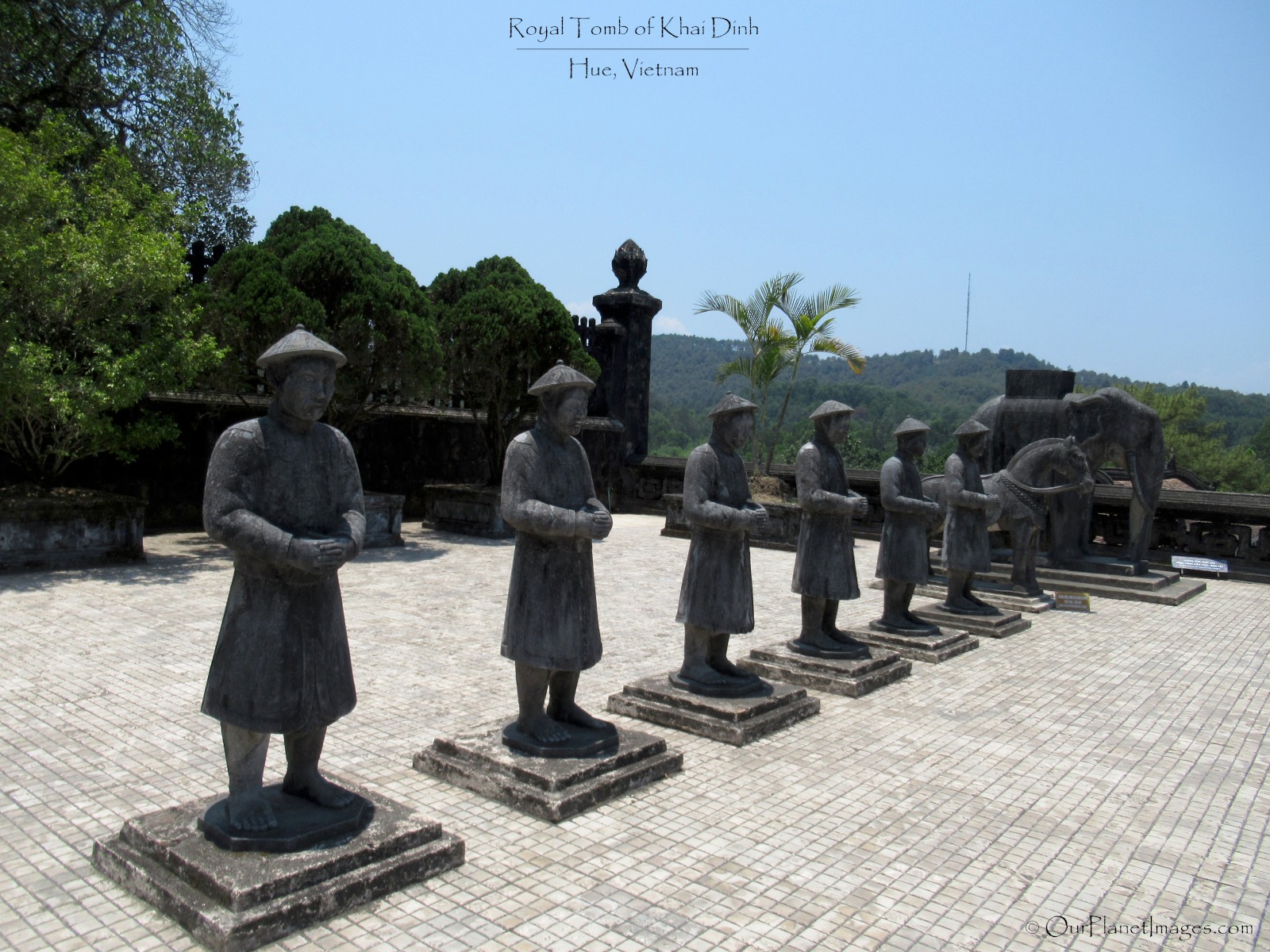
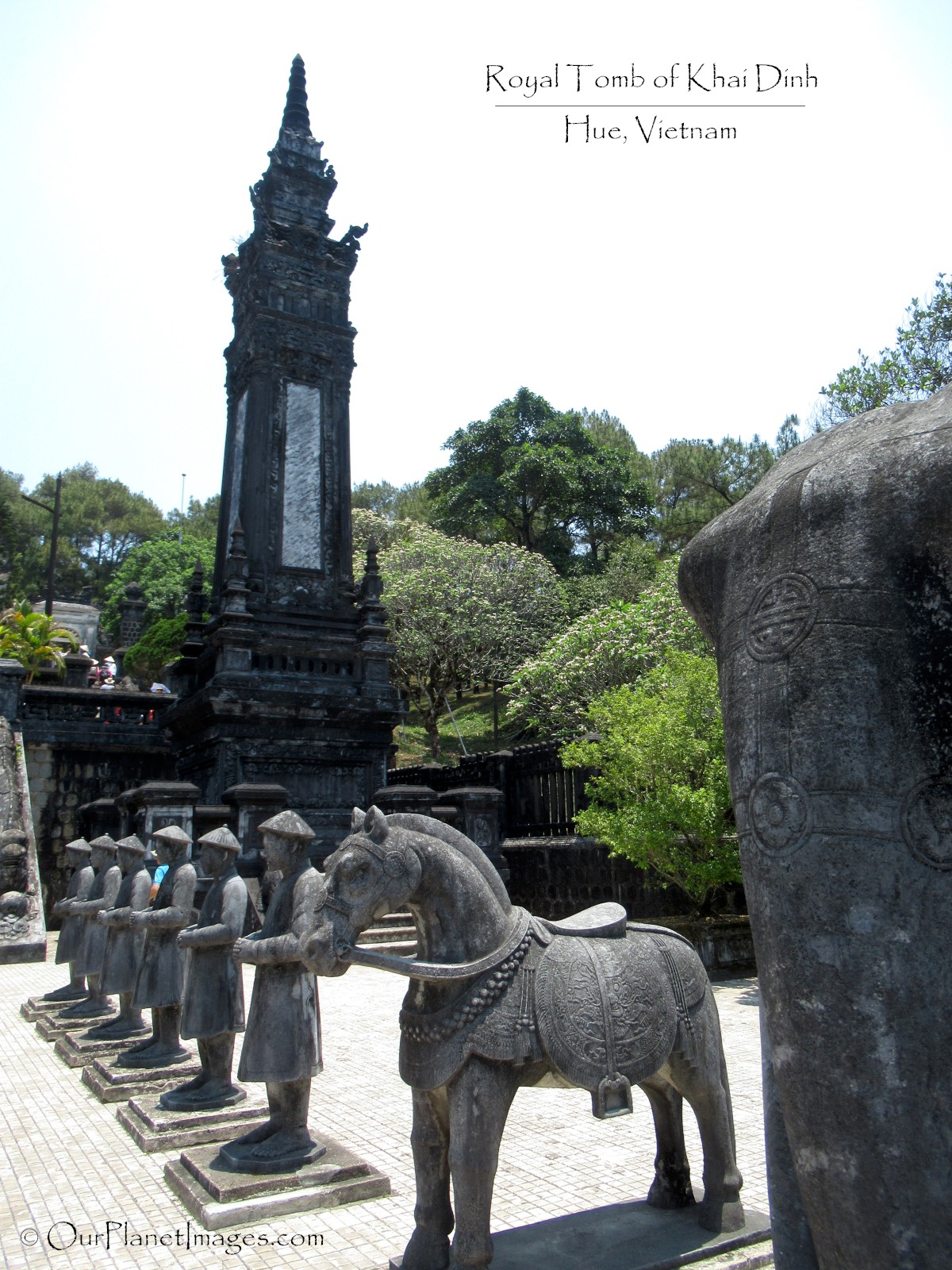
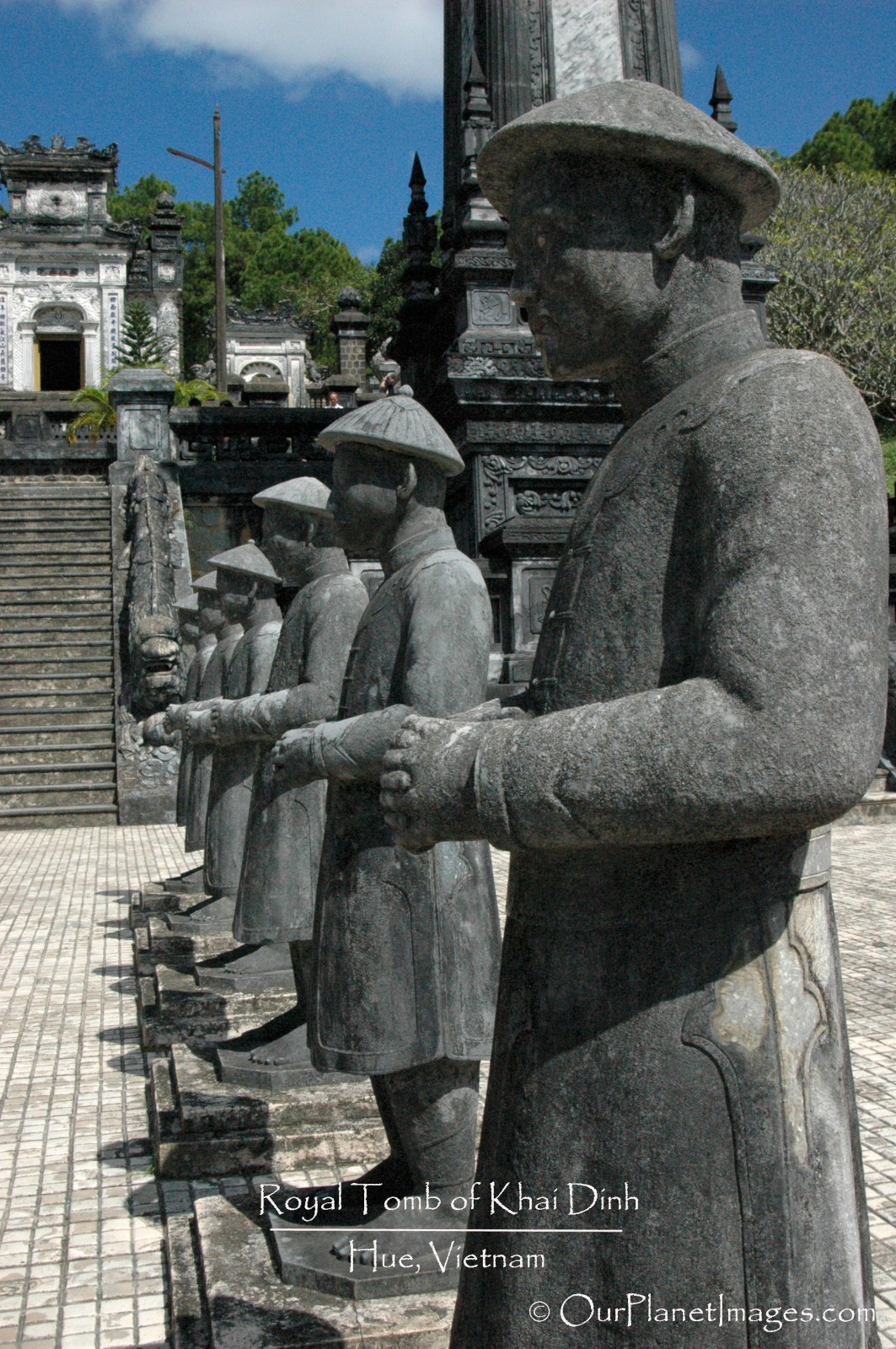
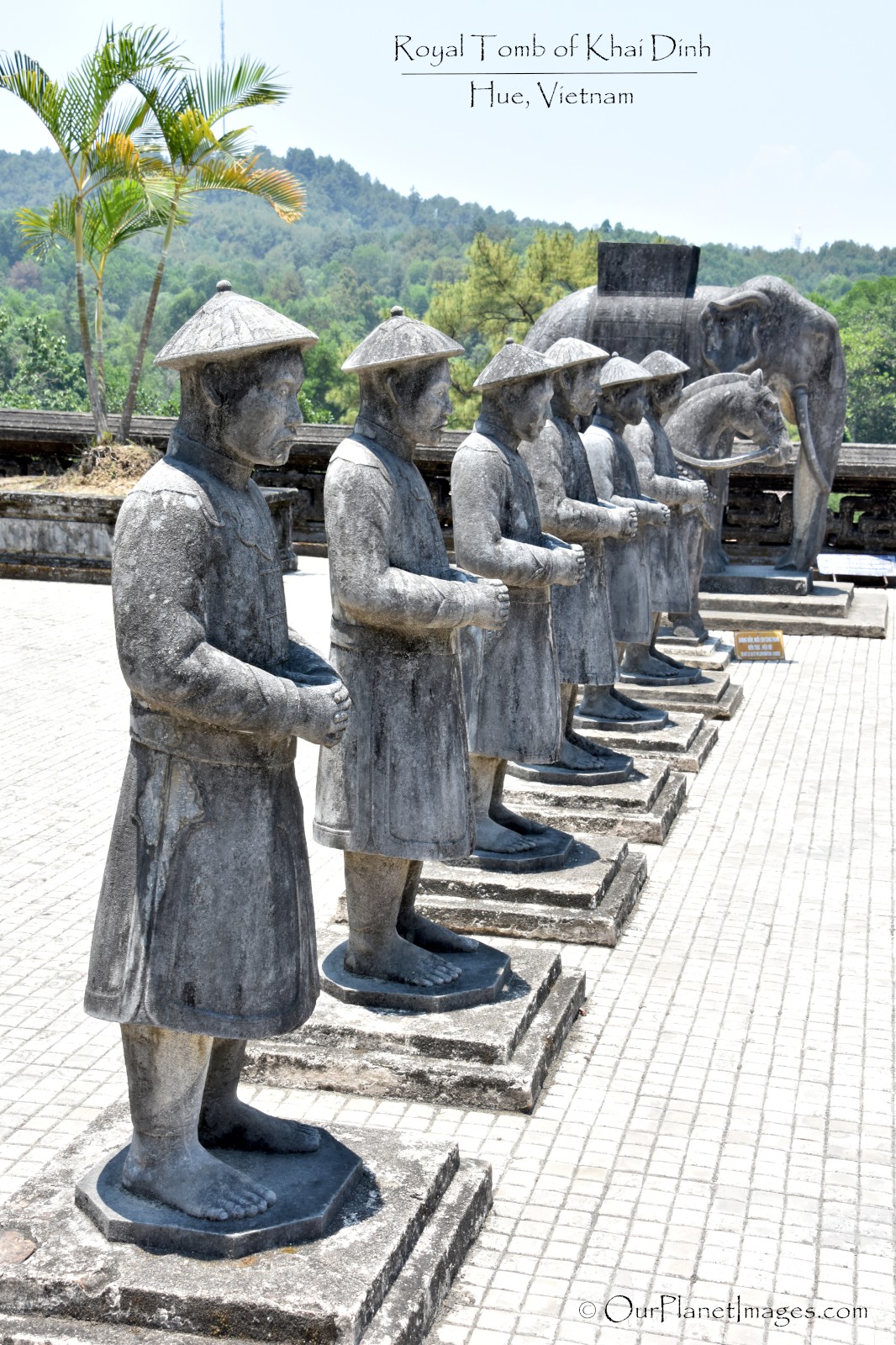
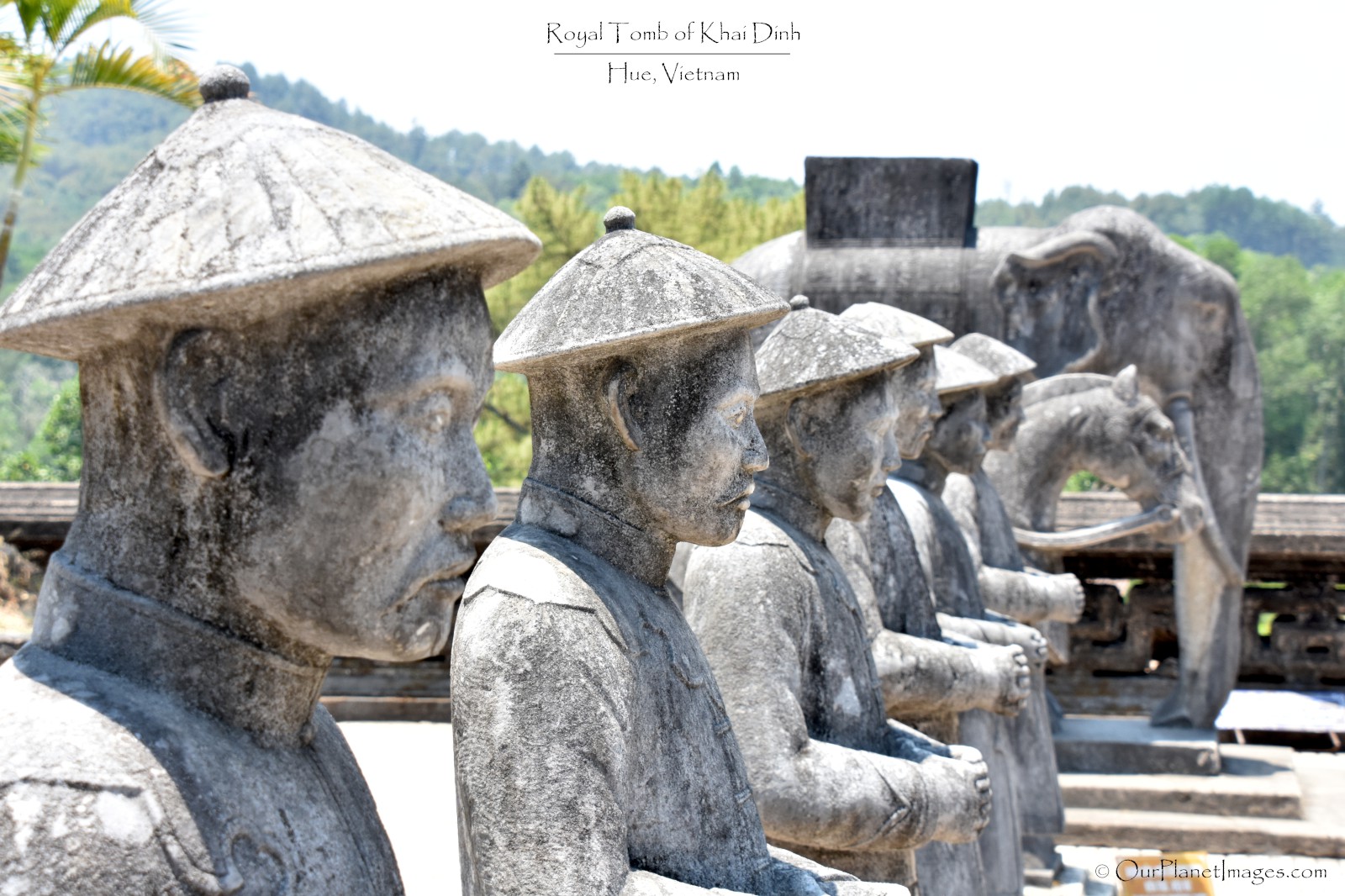
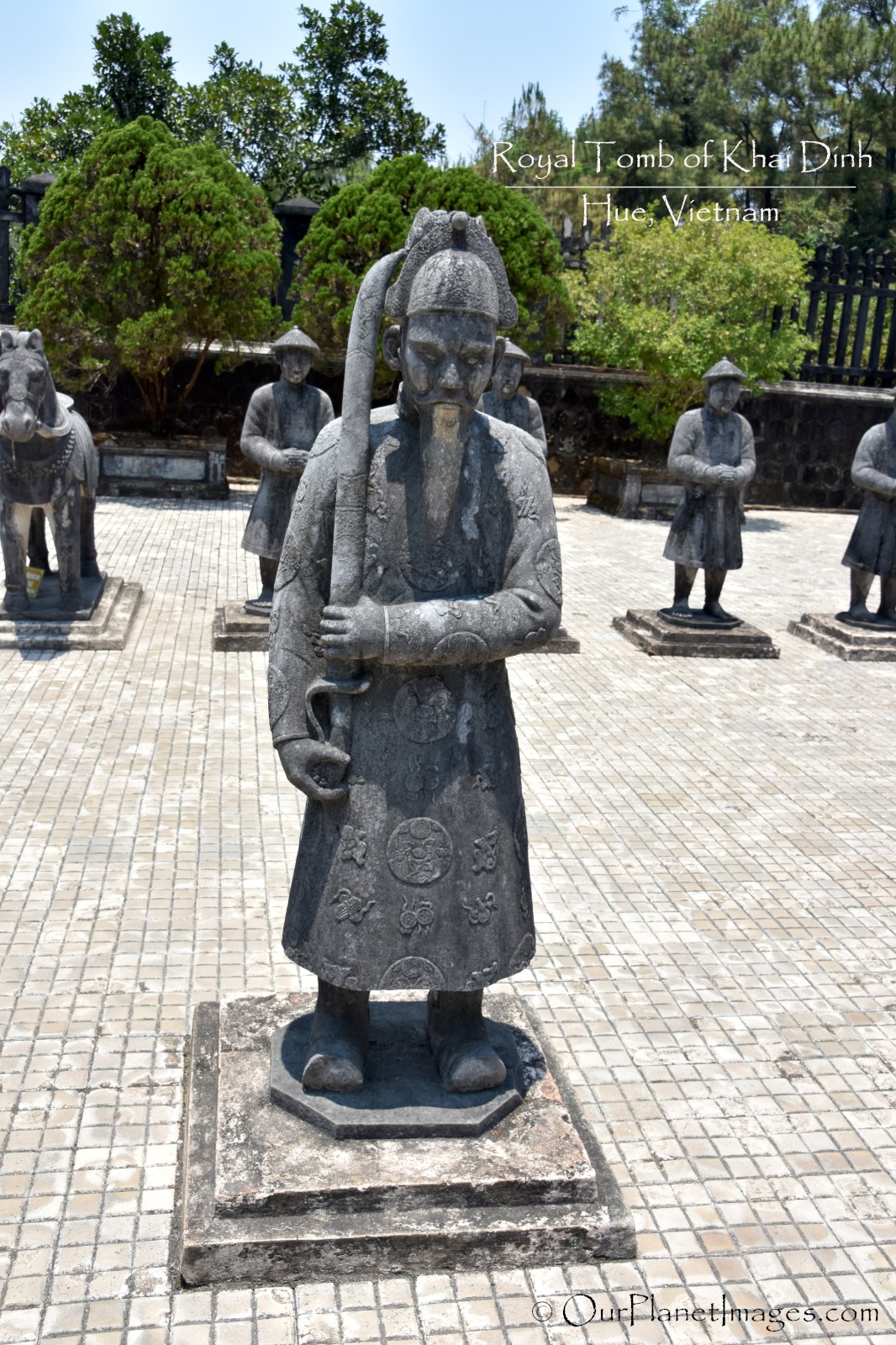
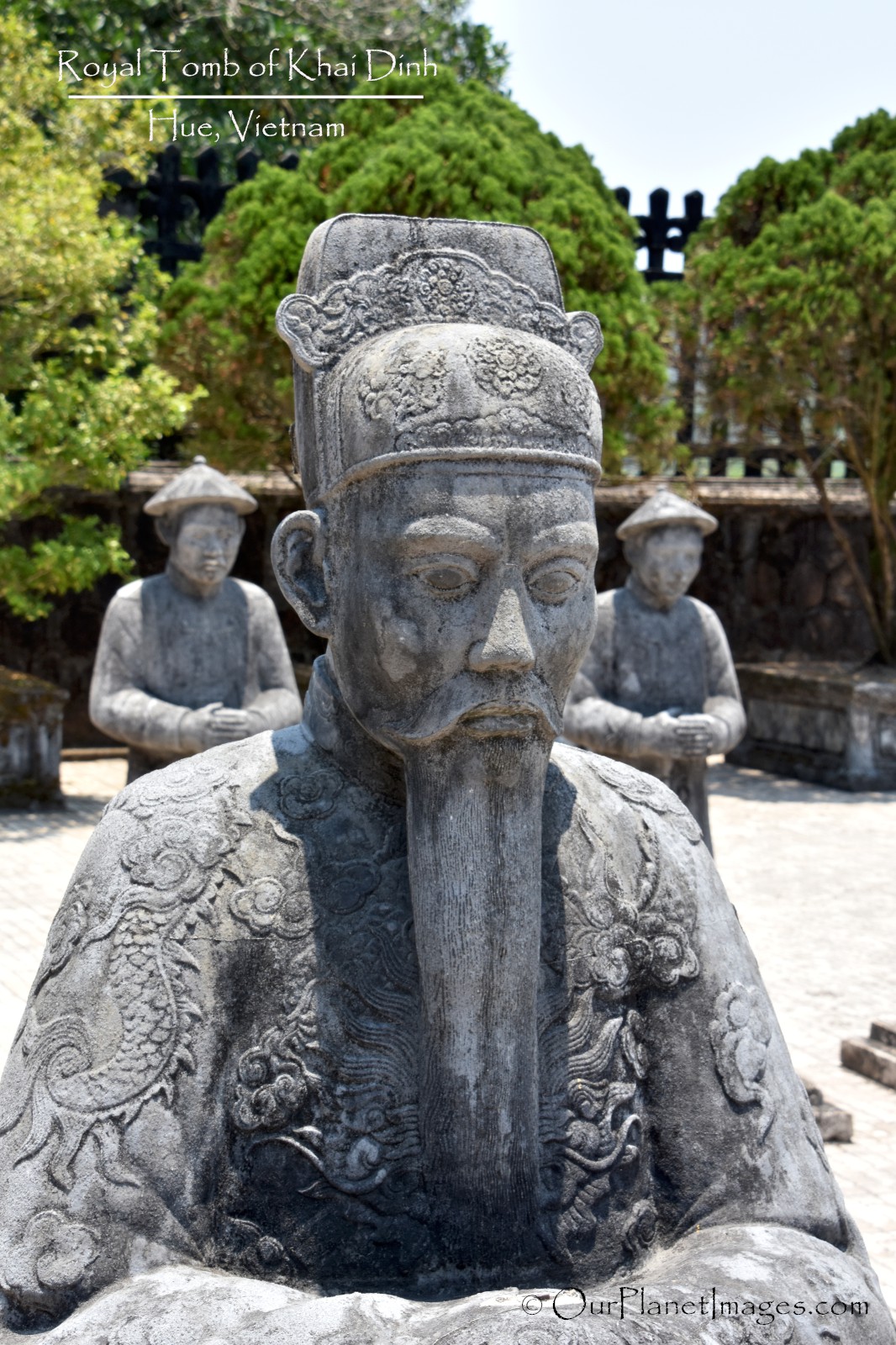
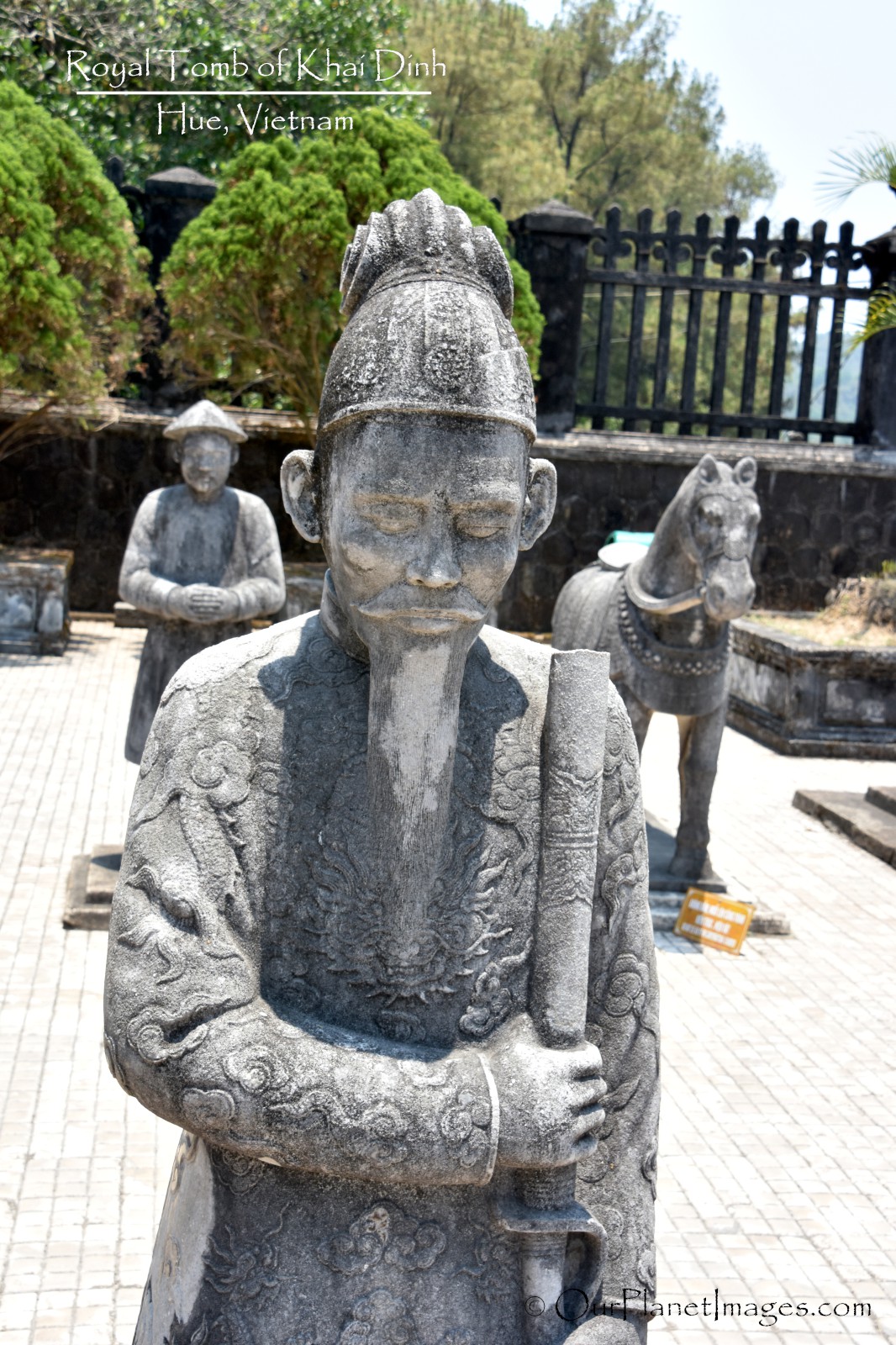
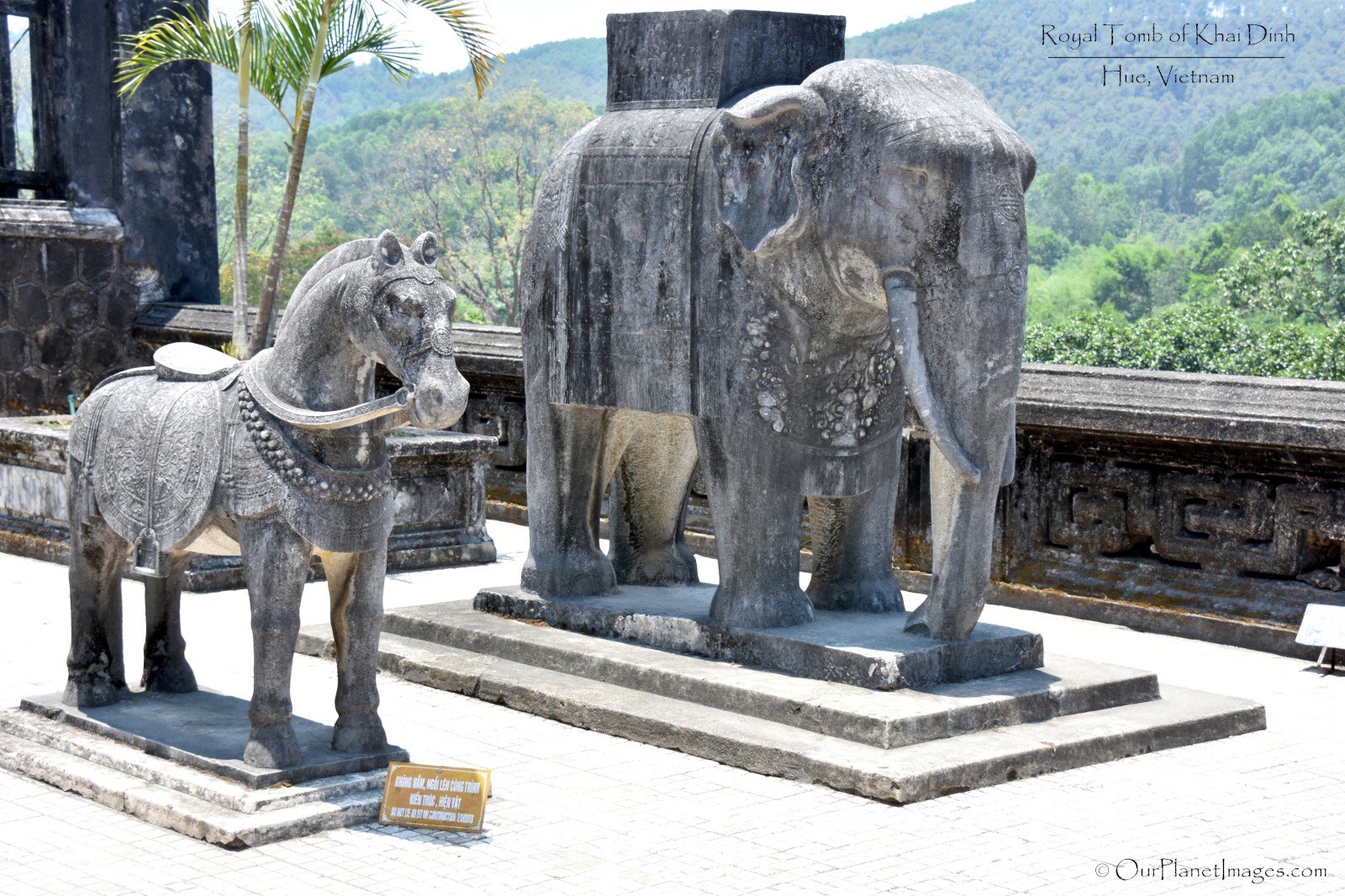
At the back of the Honor Courtyard is an octagon pavilions with four sets of small stairs allowing access to the pavilion from four sides of the octagon. The pavilion is open in the front and back and contains the biography of Emperor Khai Dinh written by his son.
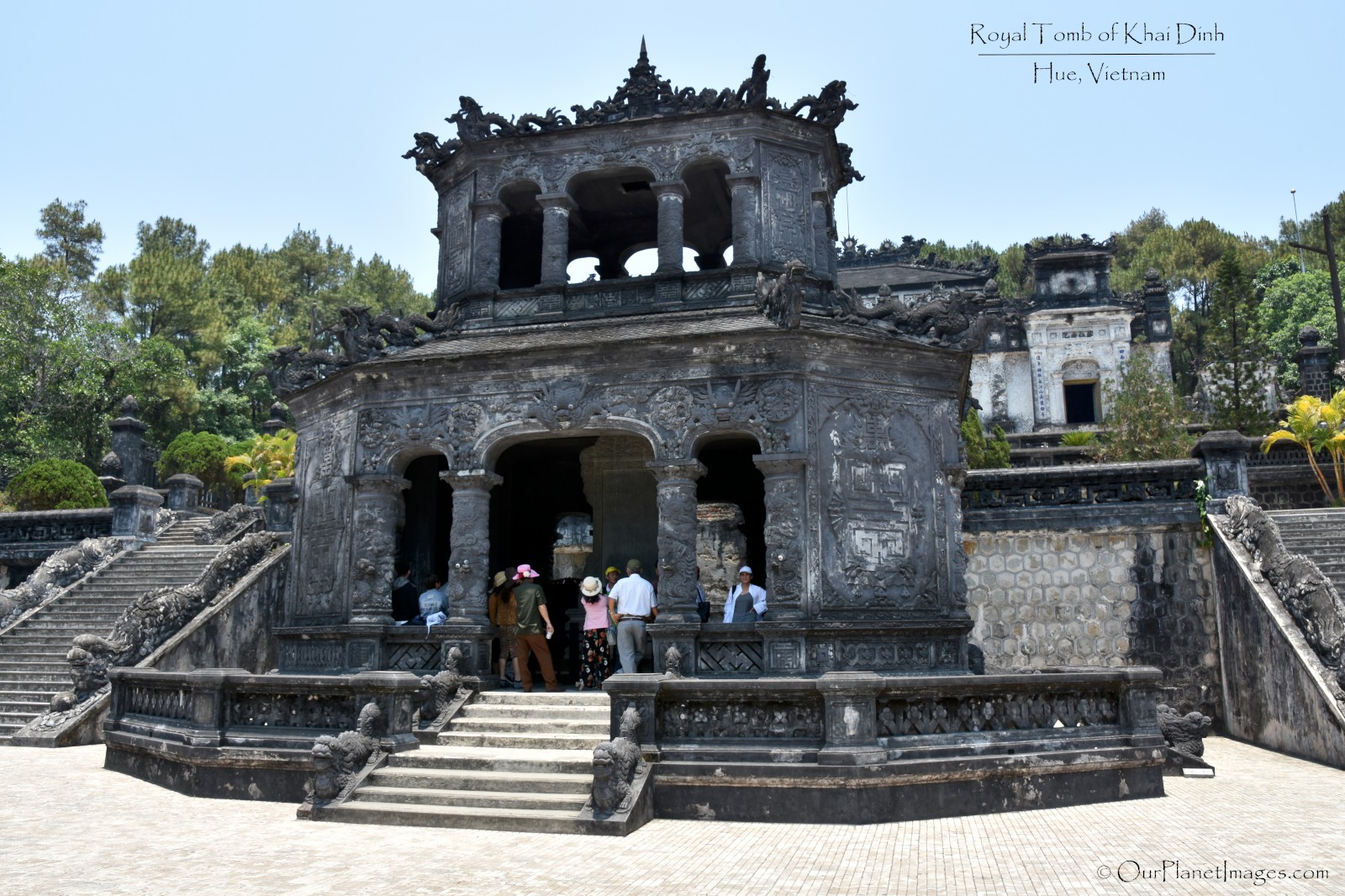
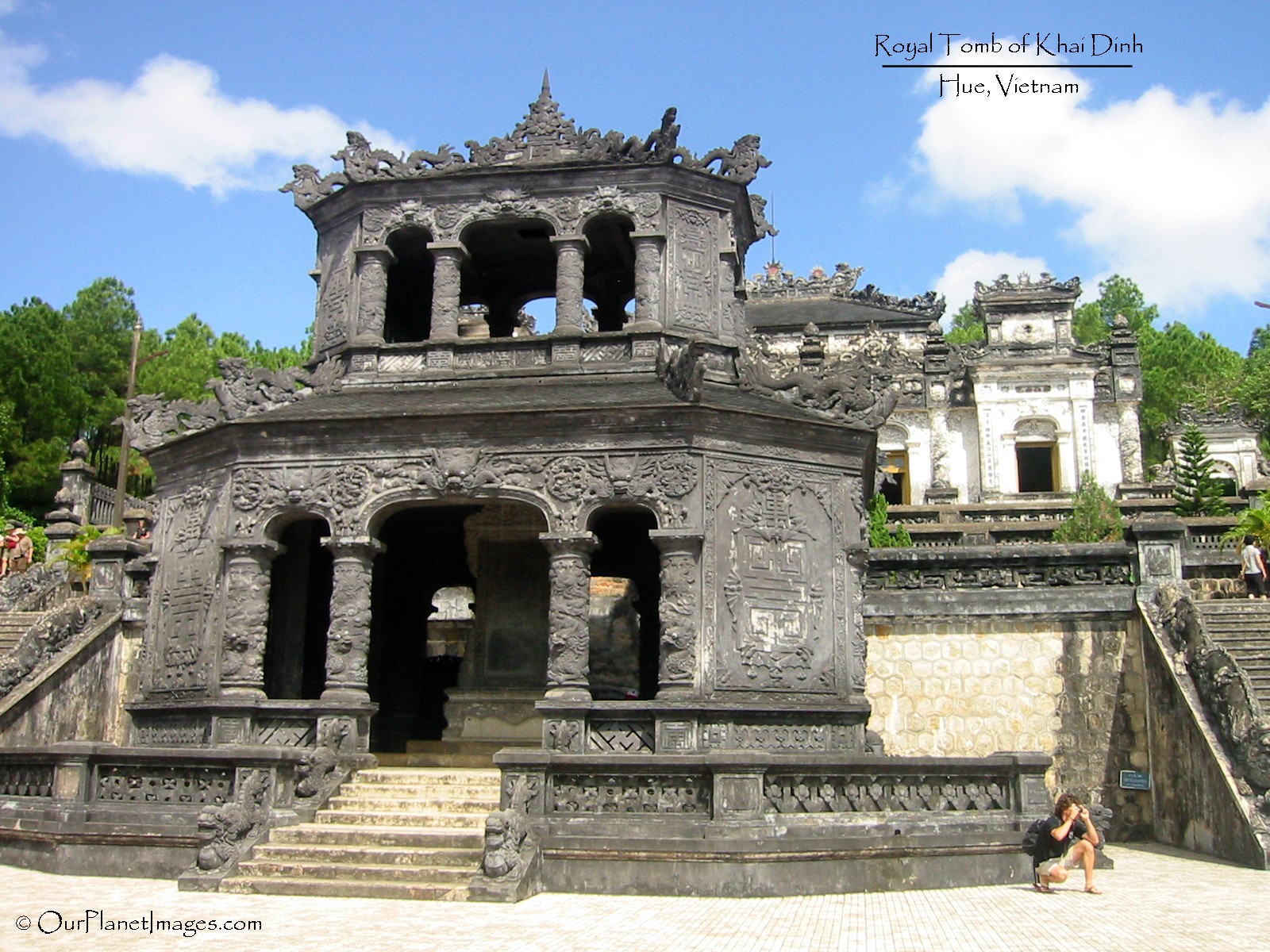
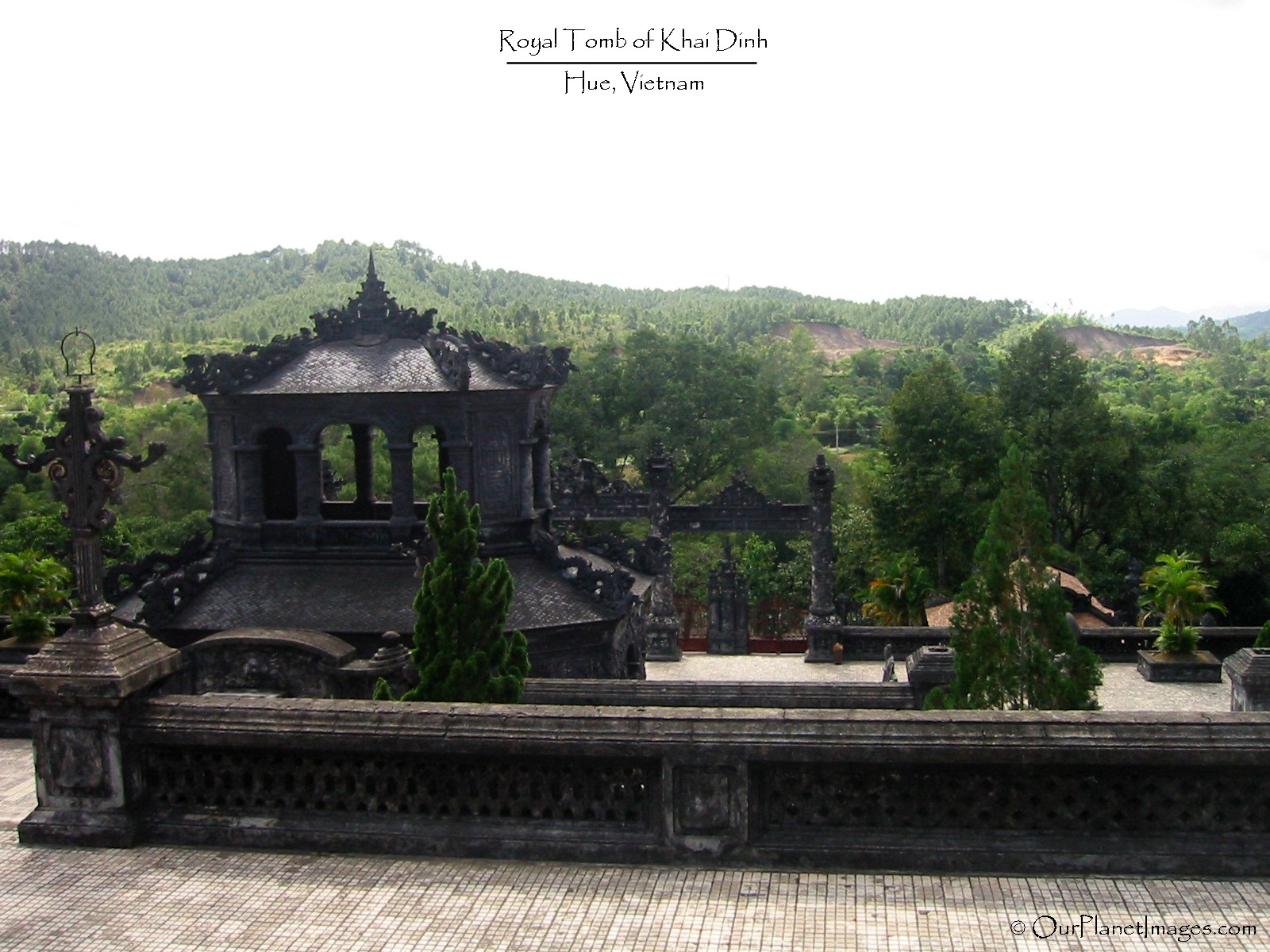
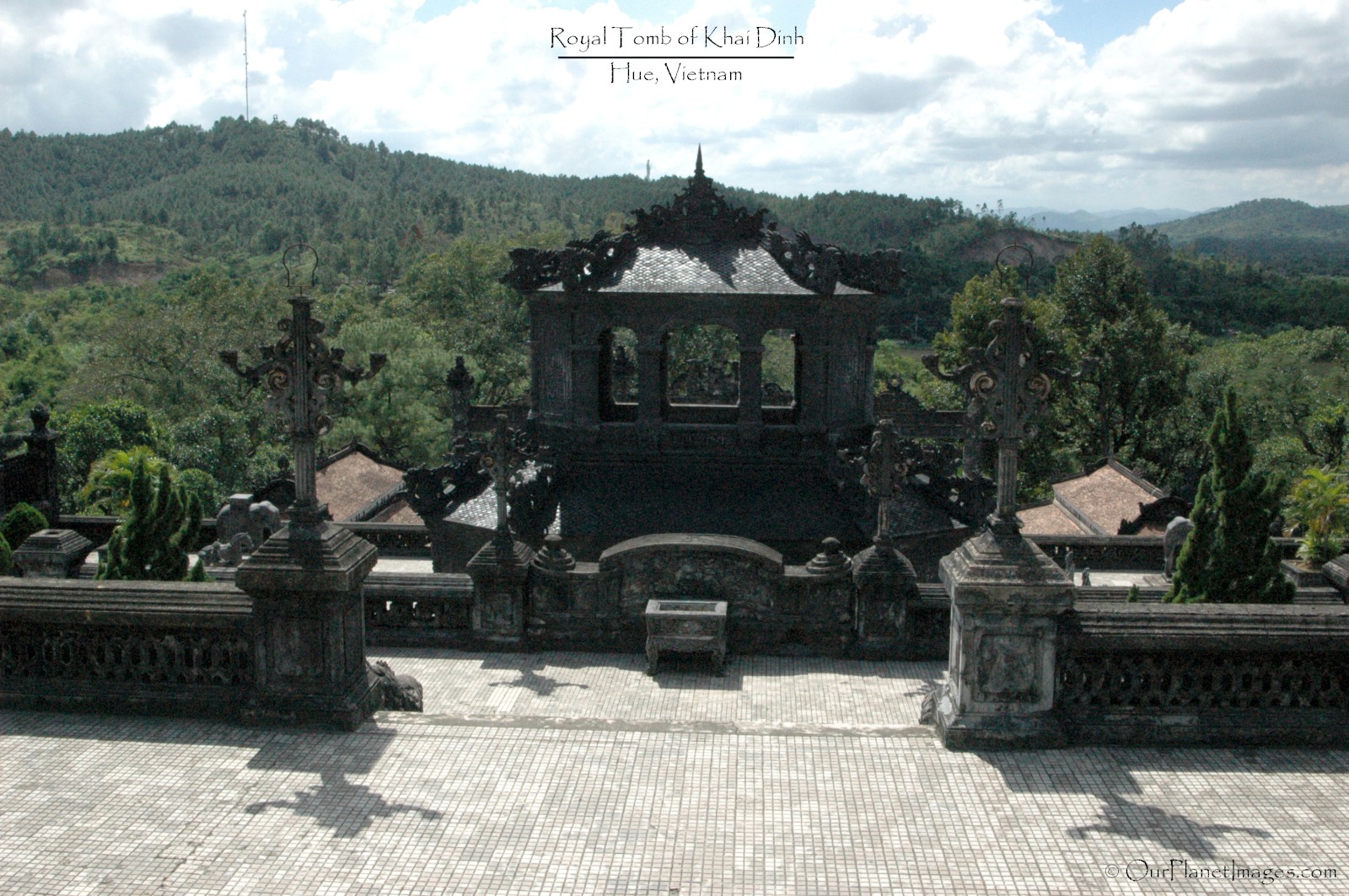


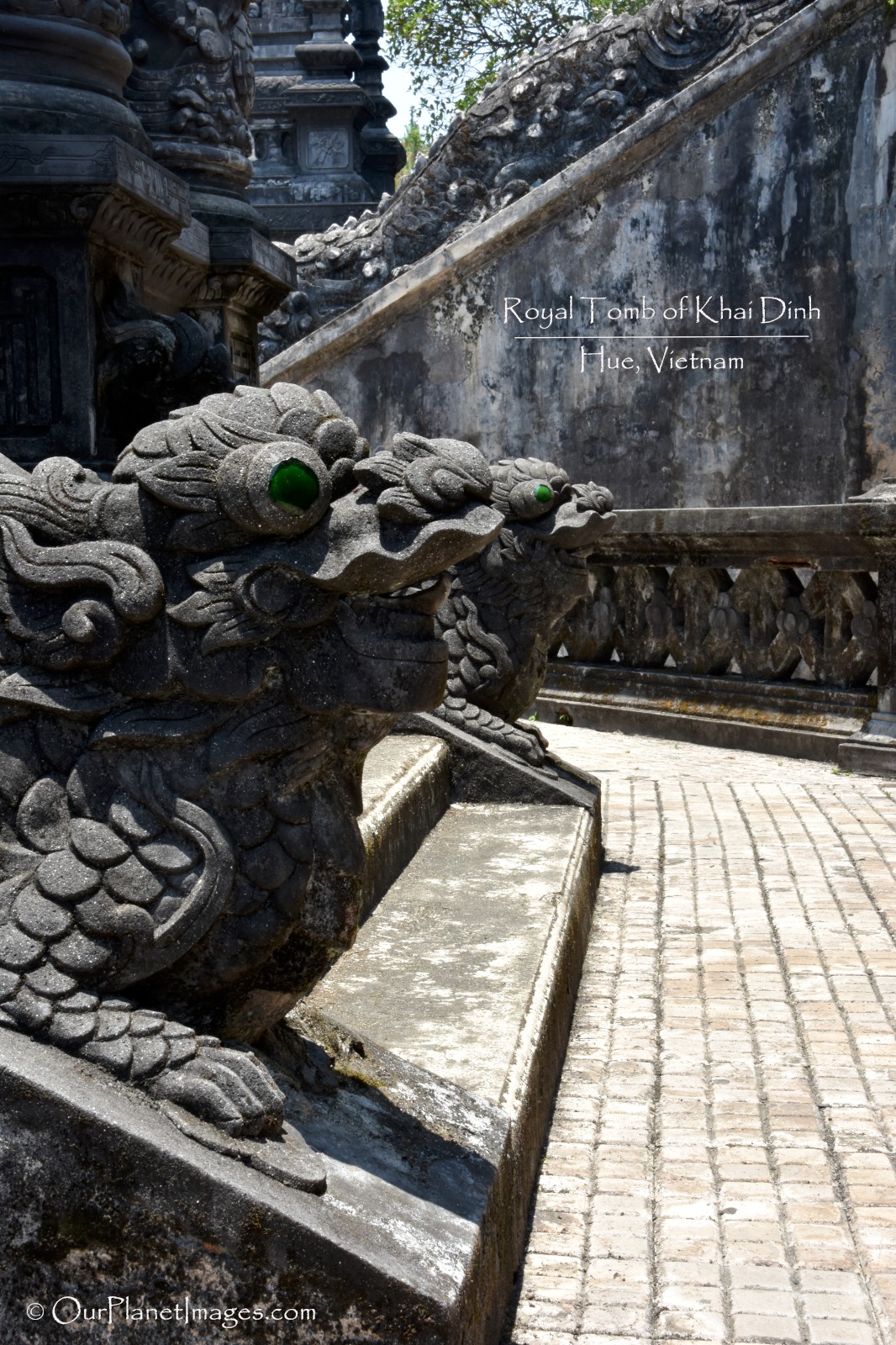
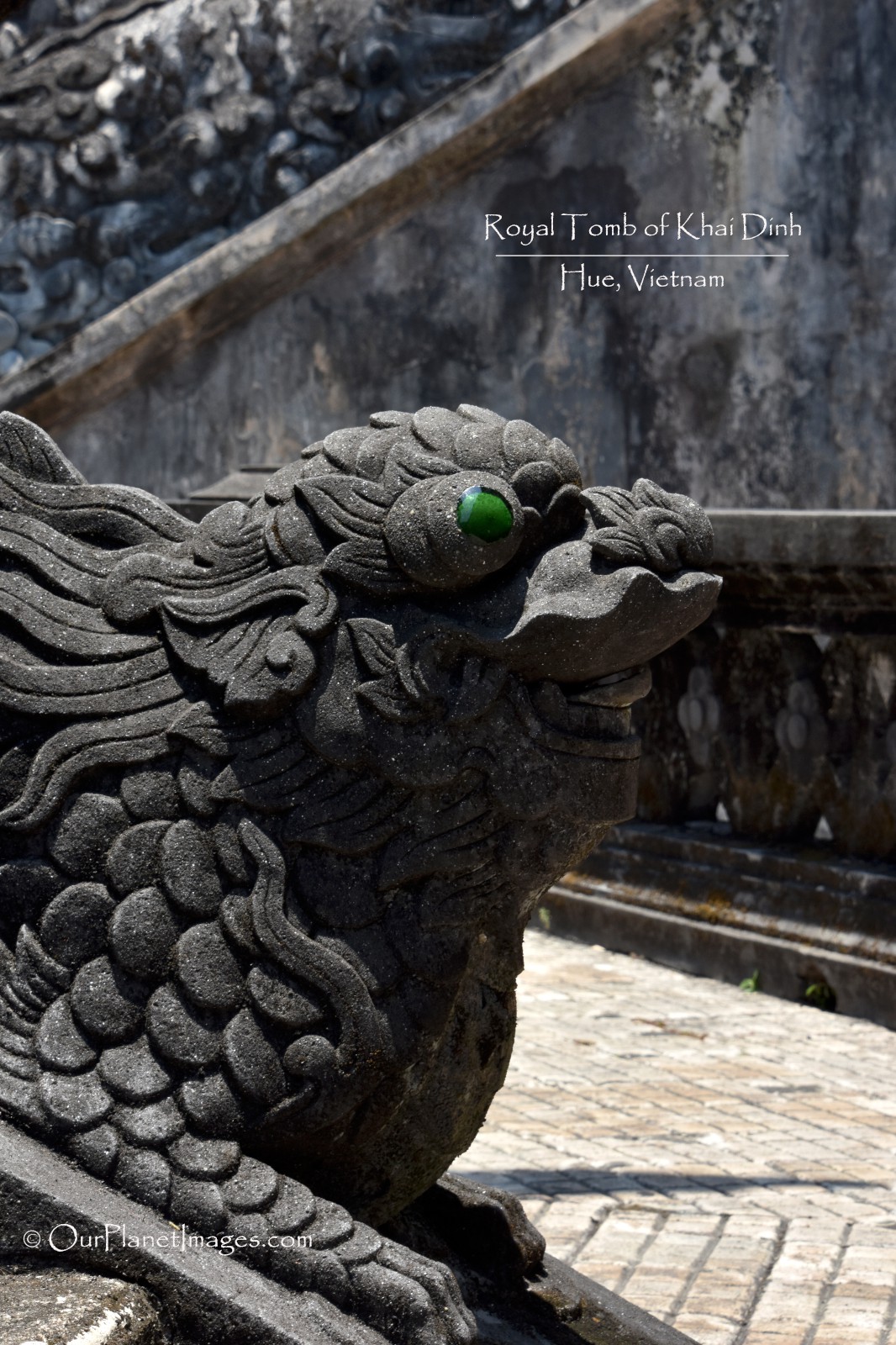
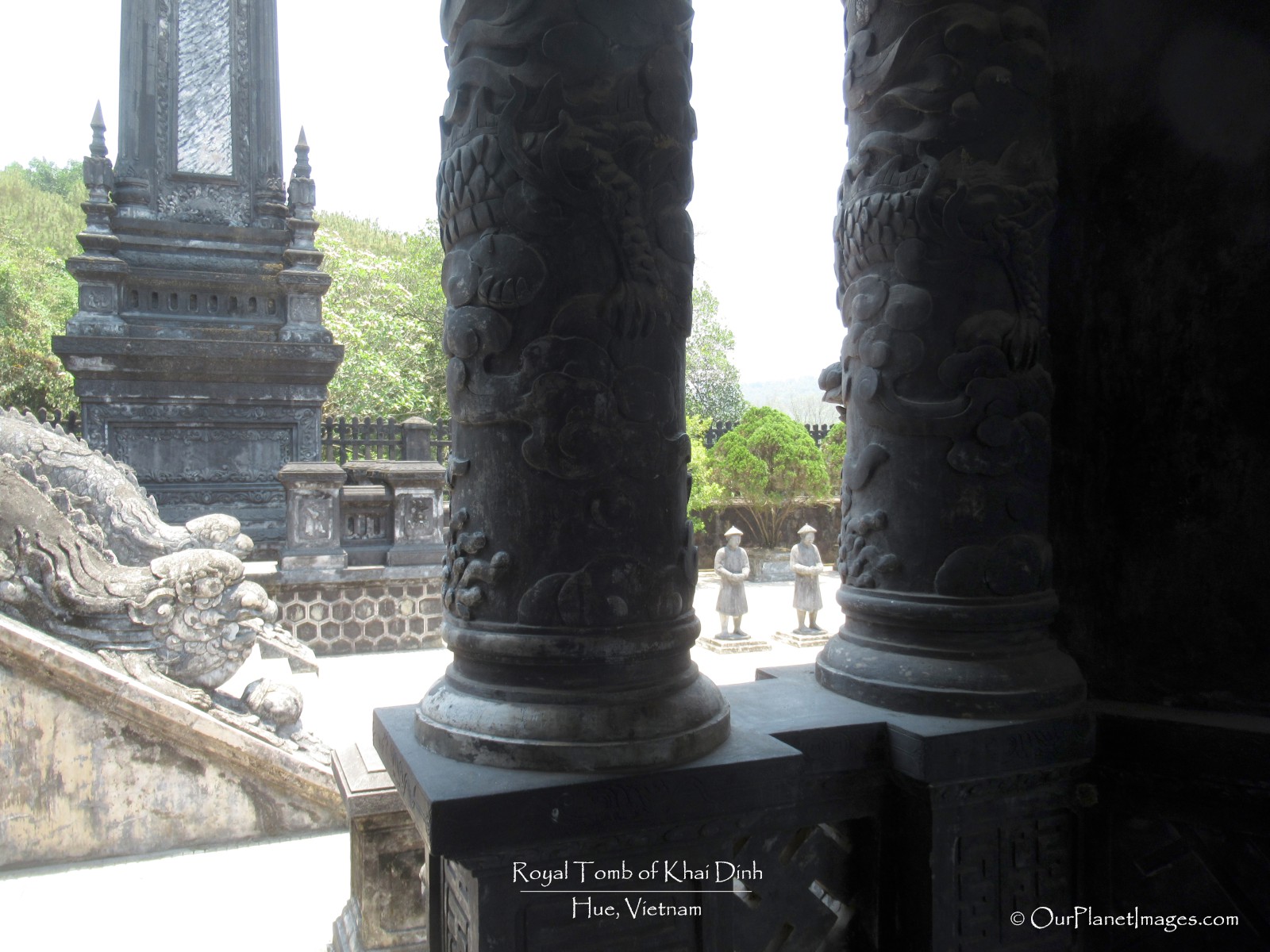
On each side of the pavilion is an obelisks and a set of stairs that leads to two small plazas on the next two levels before reaching the top level where the mausoleum is located.
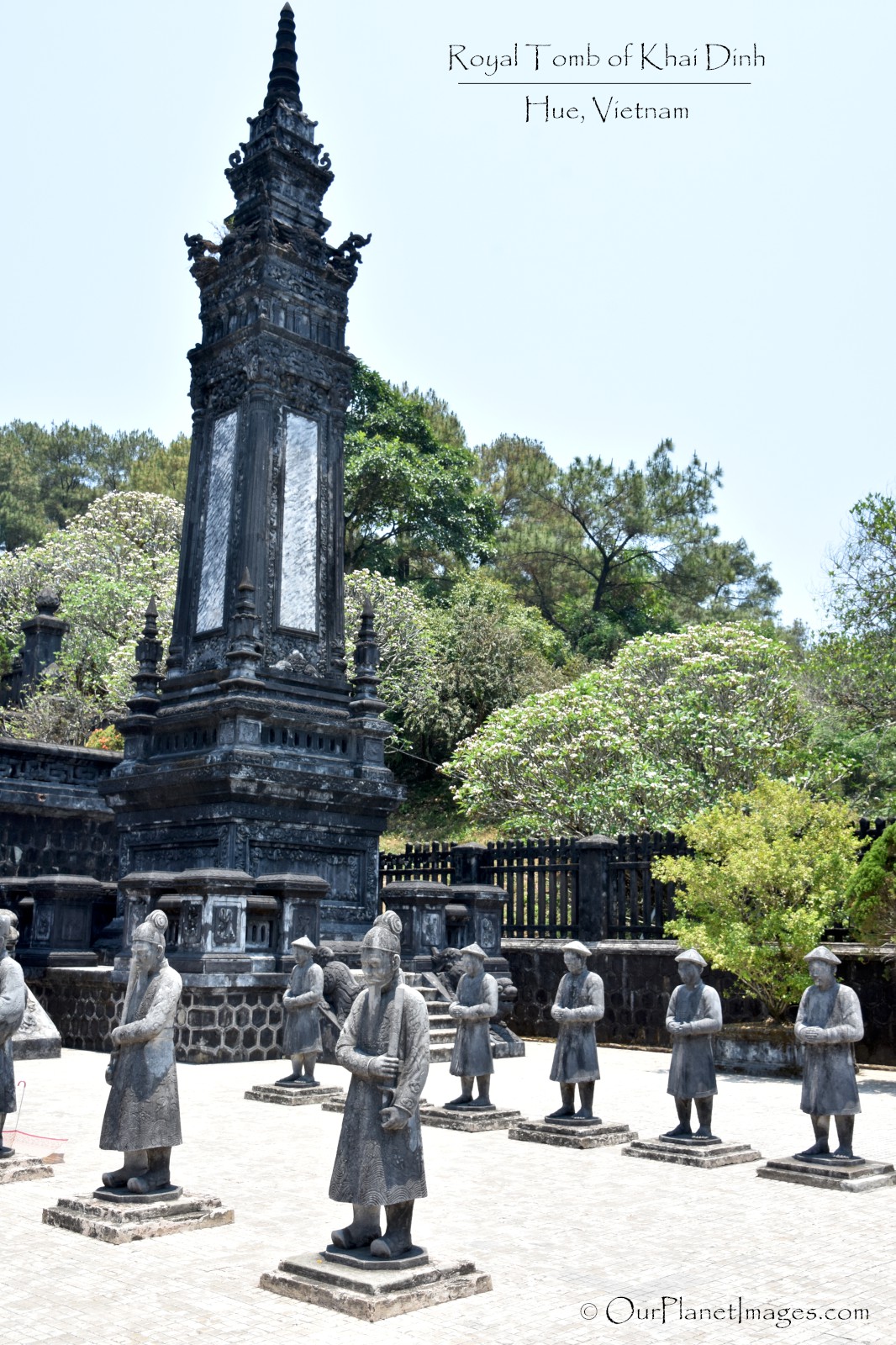
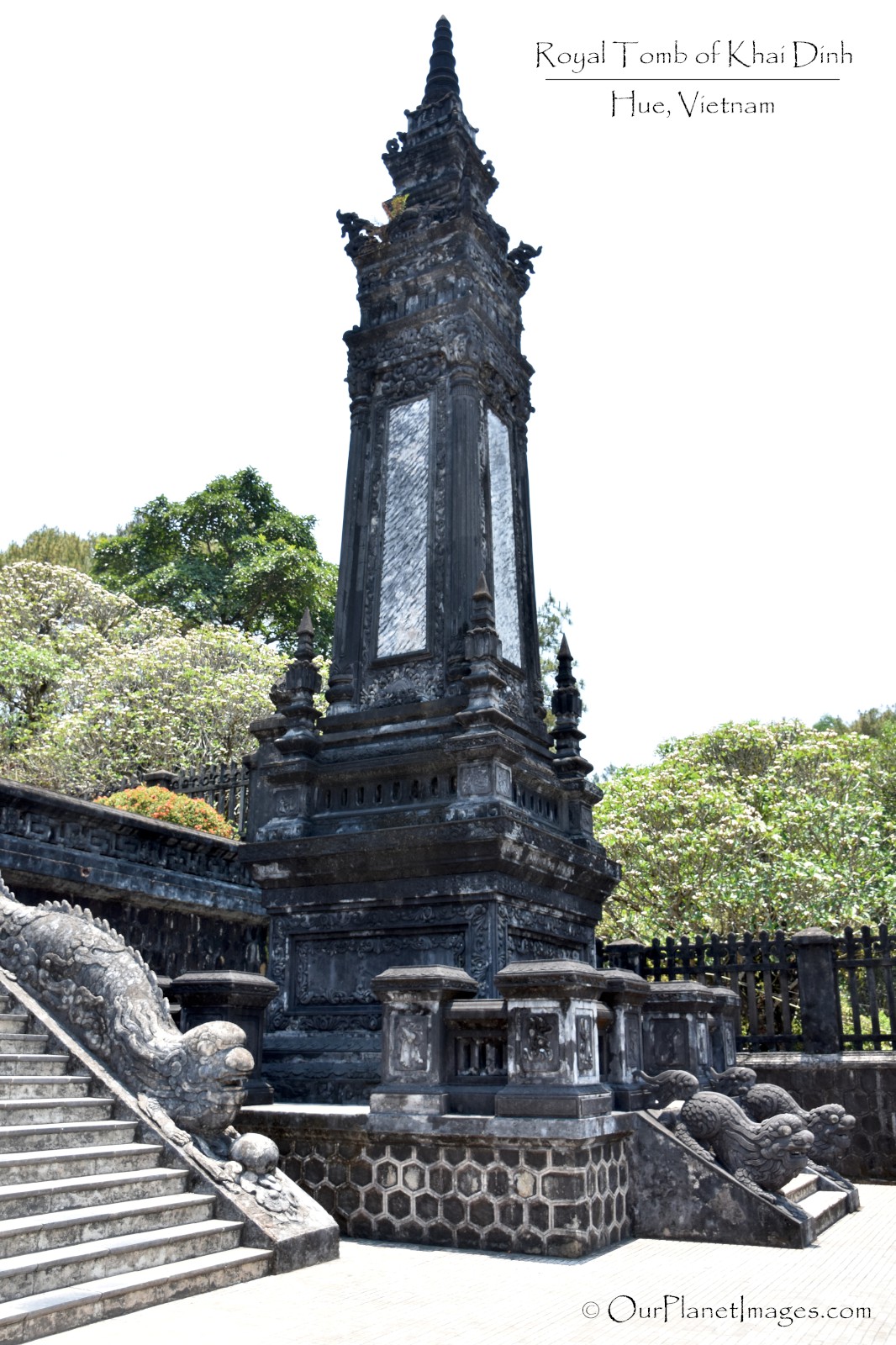
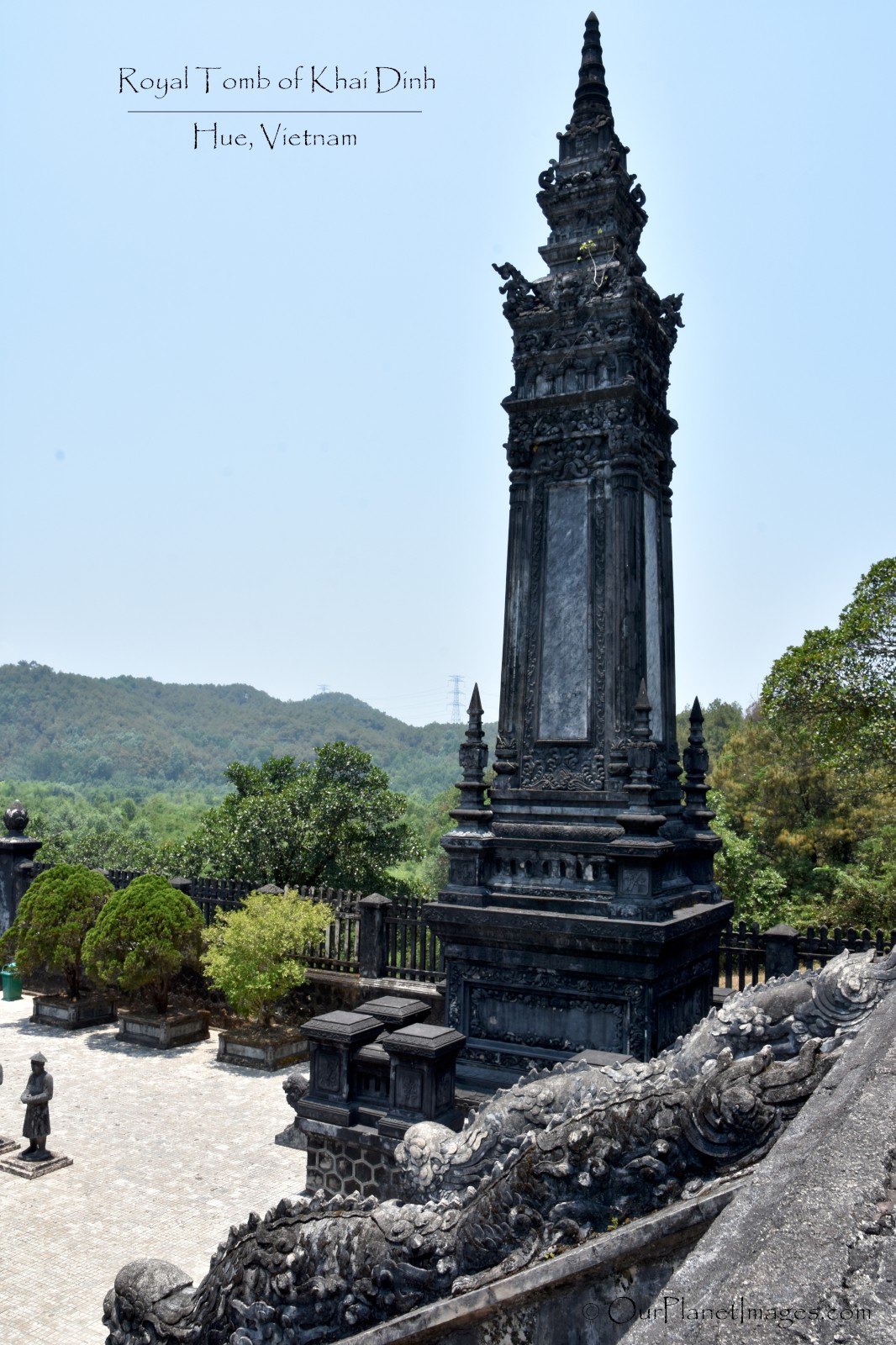
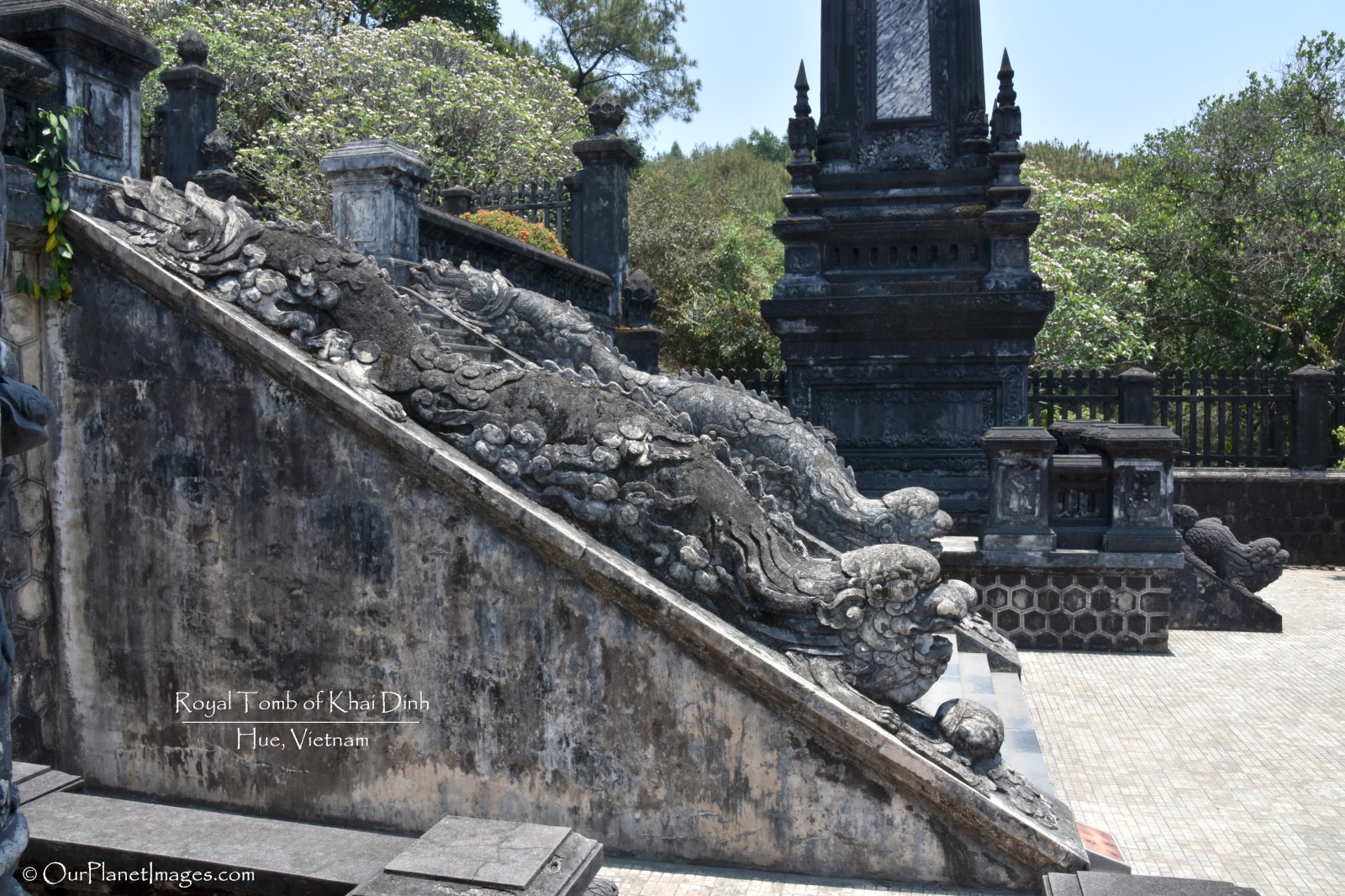
Each of the plazas are outlined with planters that are filled with medium to large plants and trees which makes for a nice garden area.
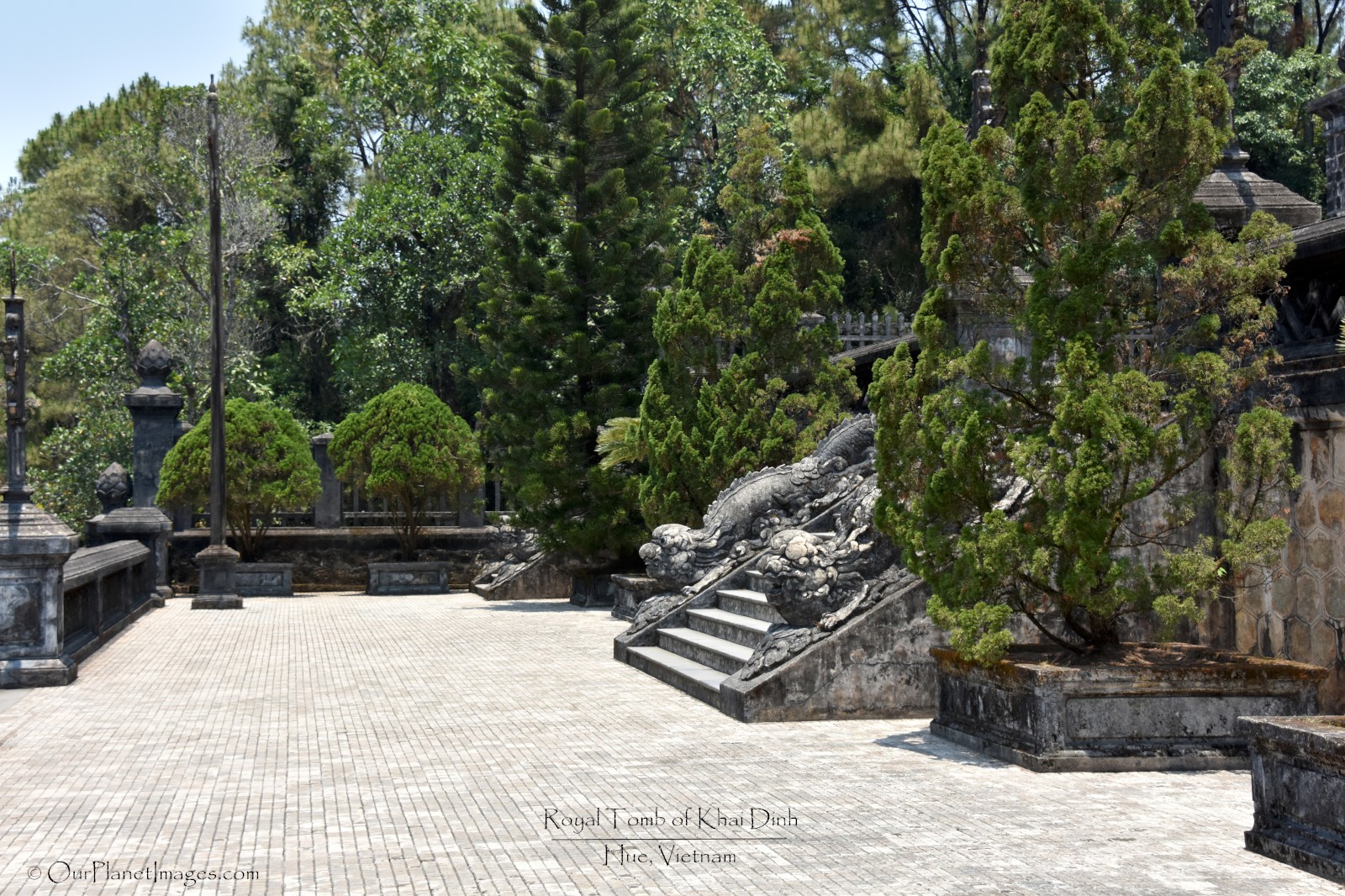
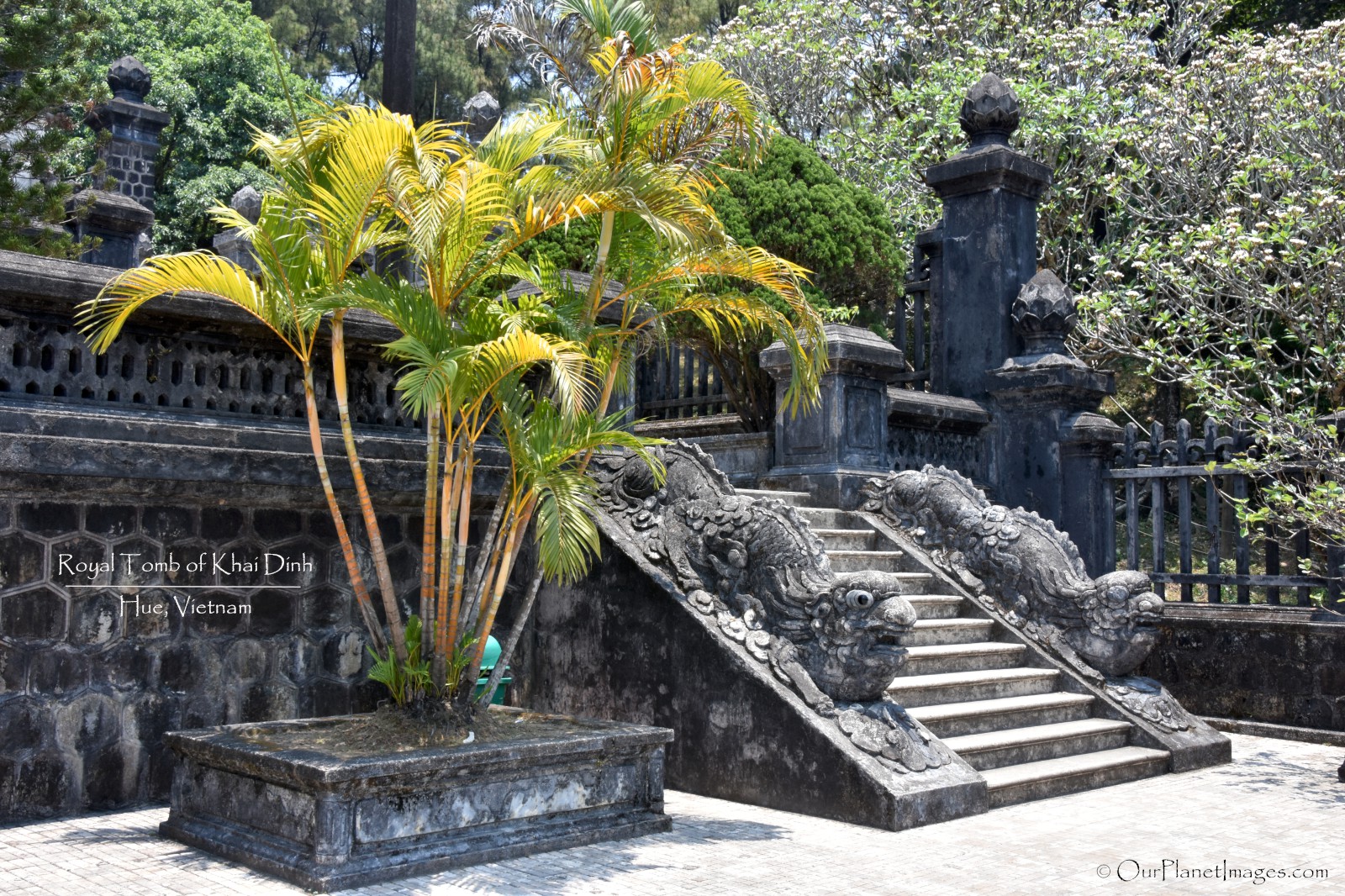
The top level is the mausoleum level where the main building is located. This building is divided into three halls which are the Khai Thanh Palace, the Royal Crypt and the alter hall (not available).

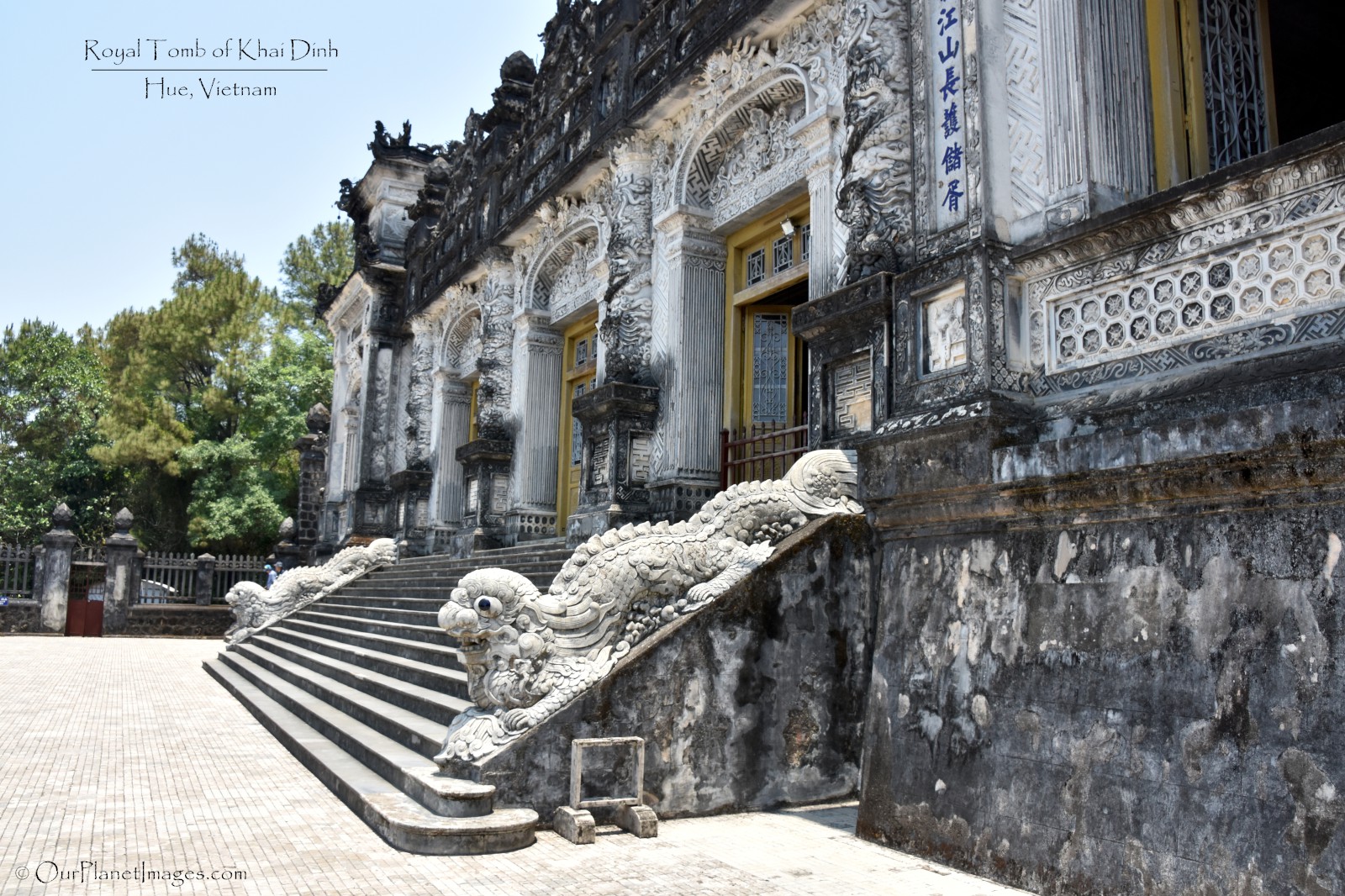
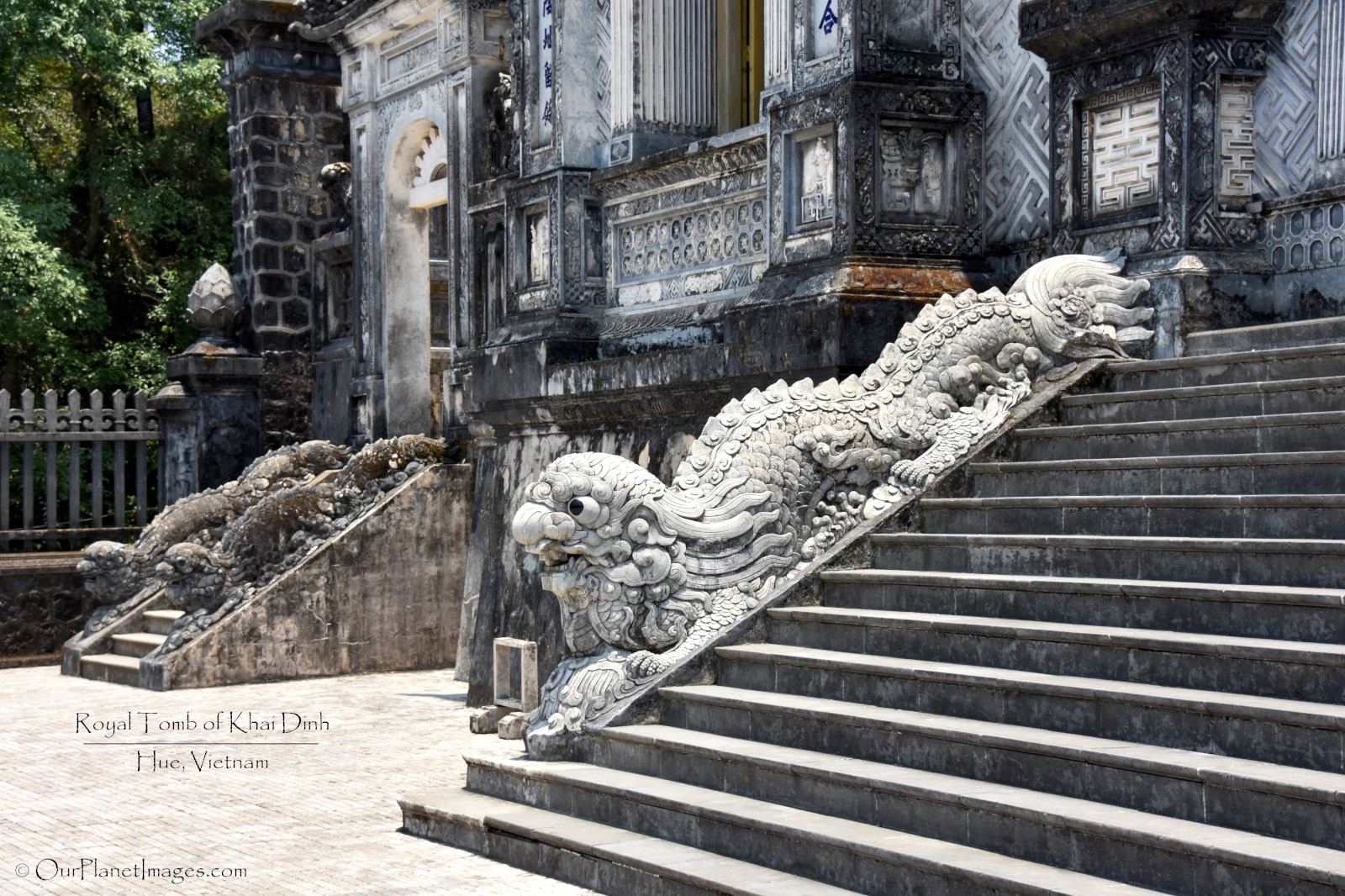
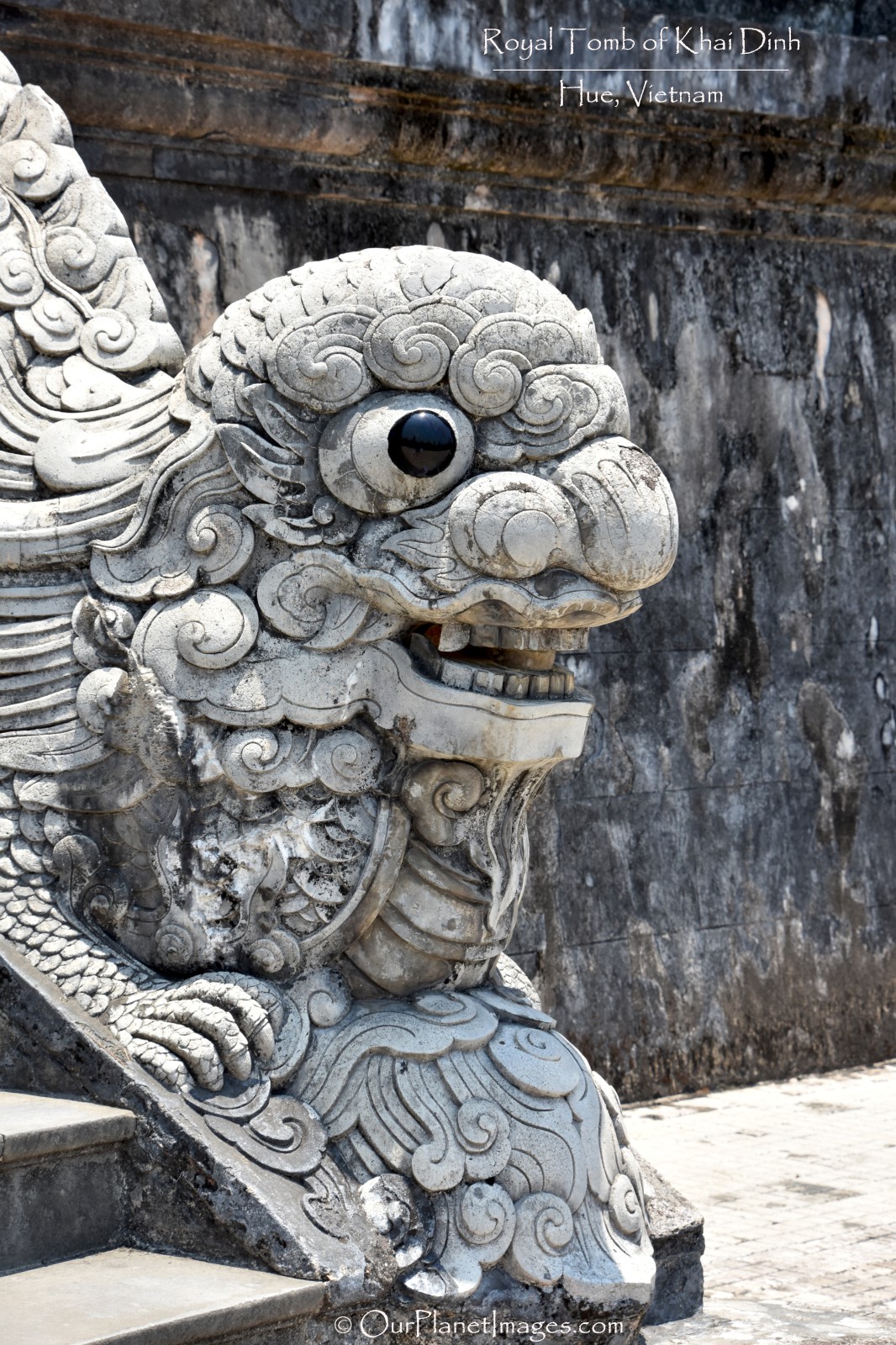
The walls and ceiling of these halls are decorated with murals made from colorful bits of broken porcelain and glass embedded in cement.
The first room is the Khai Thanh Palace and which is highlighted by a photo of Khai Dinh and a complex painting on the ceiling featuring 9 dragons in clouds.
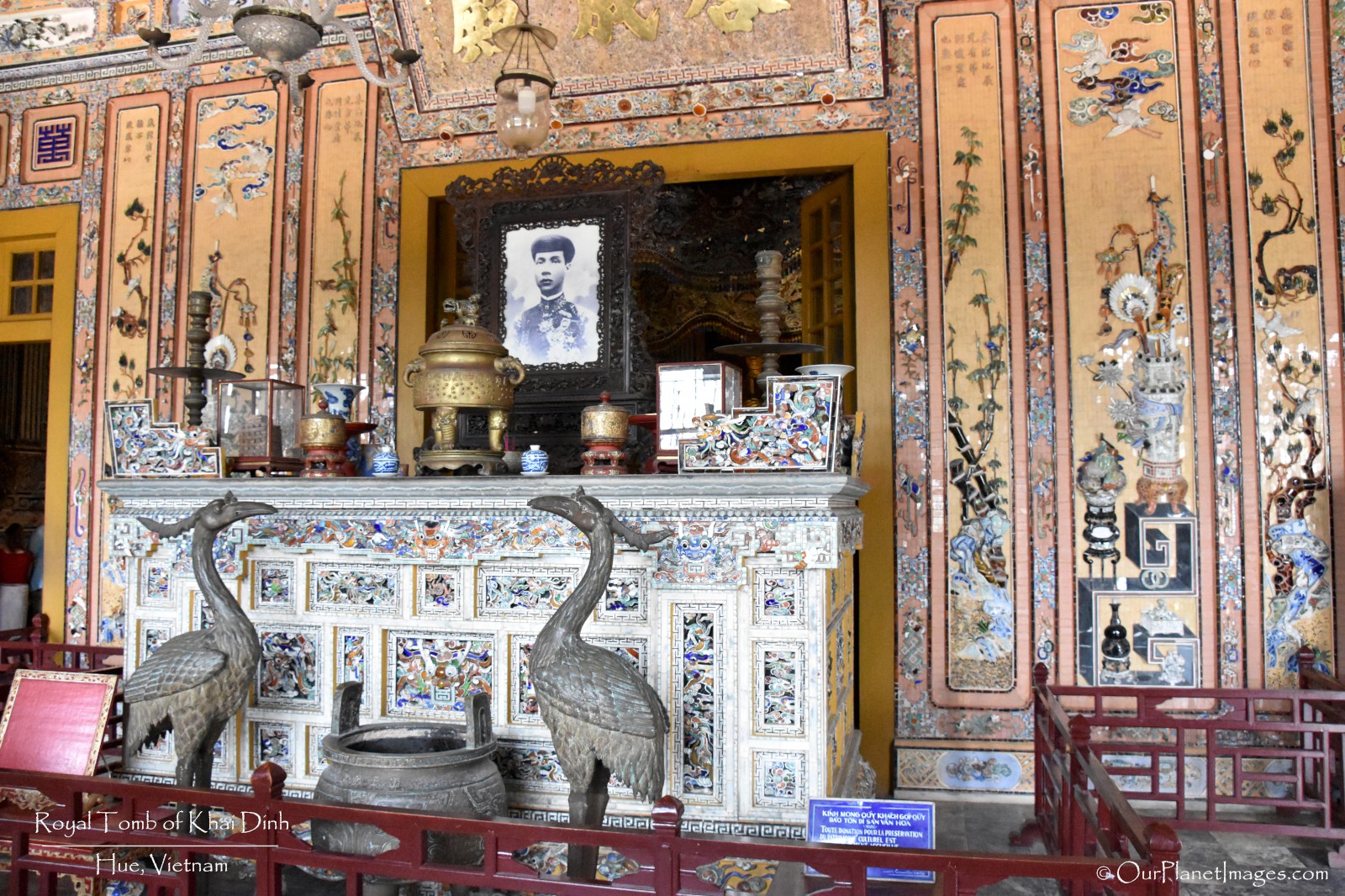
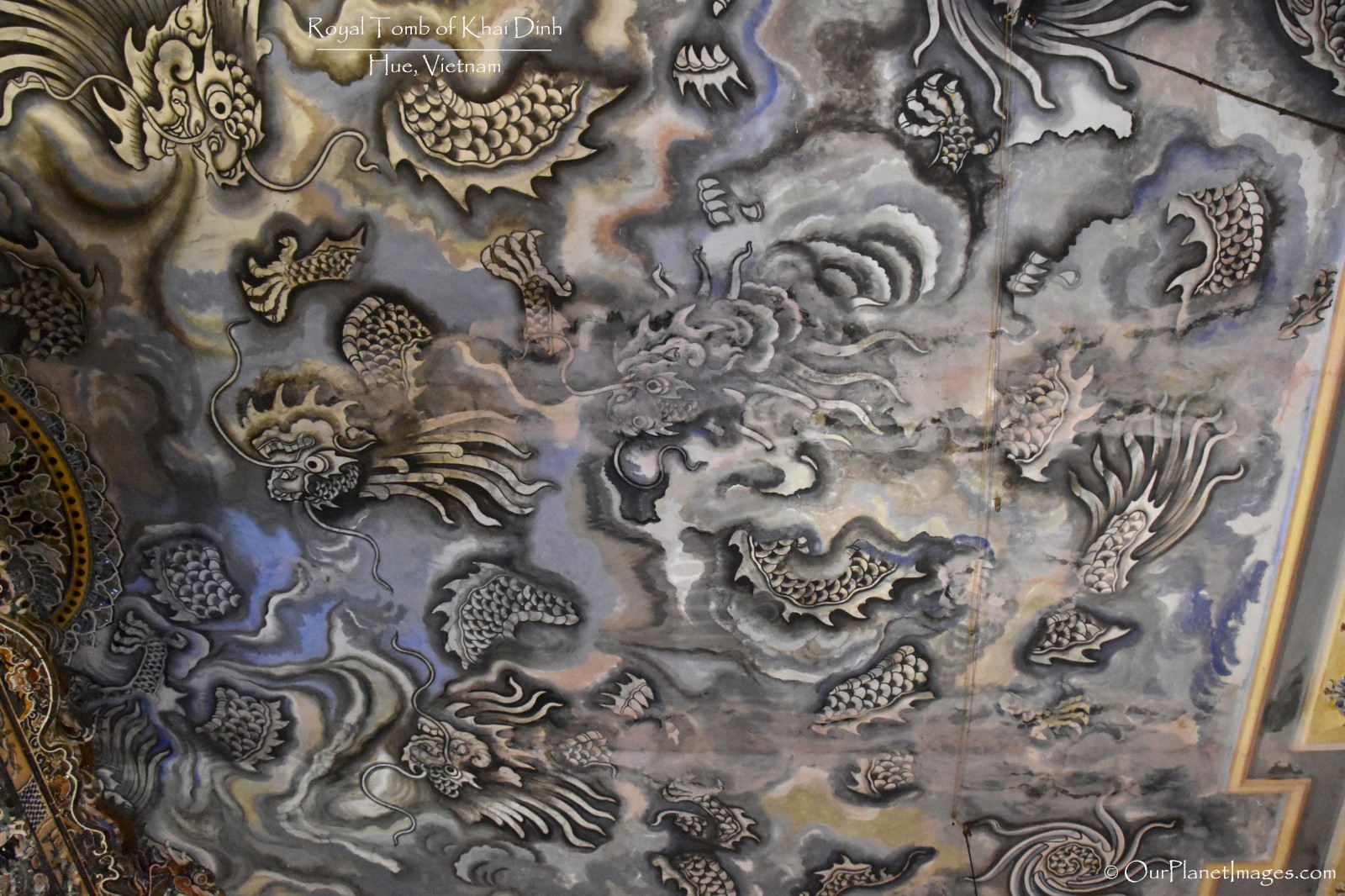
The most spectacular room is the Royal Crypt. In the center of this room is a statue of Khai Dinh sitting under a canopy.
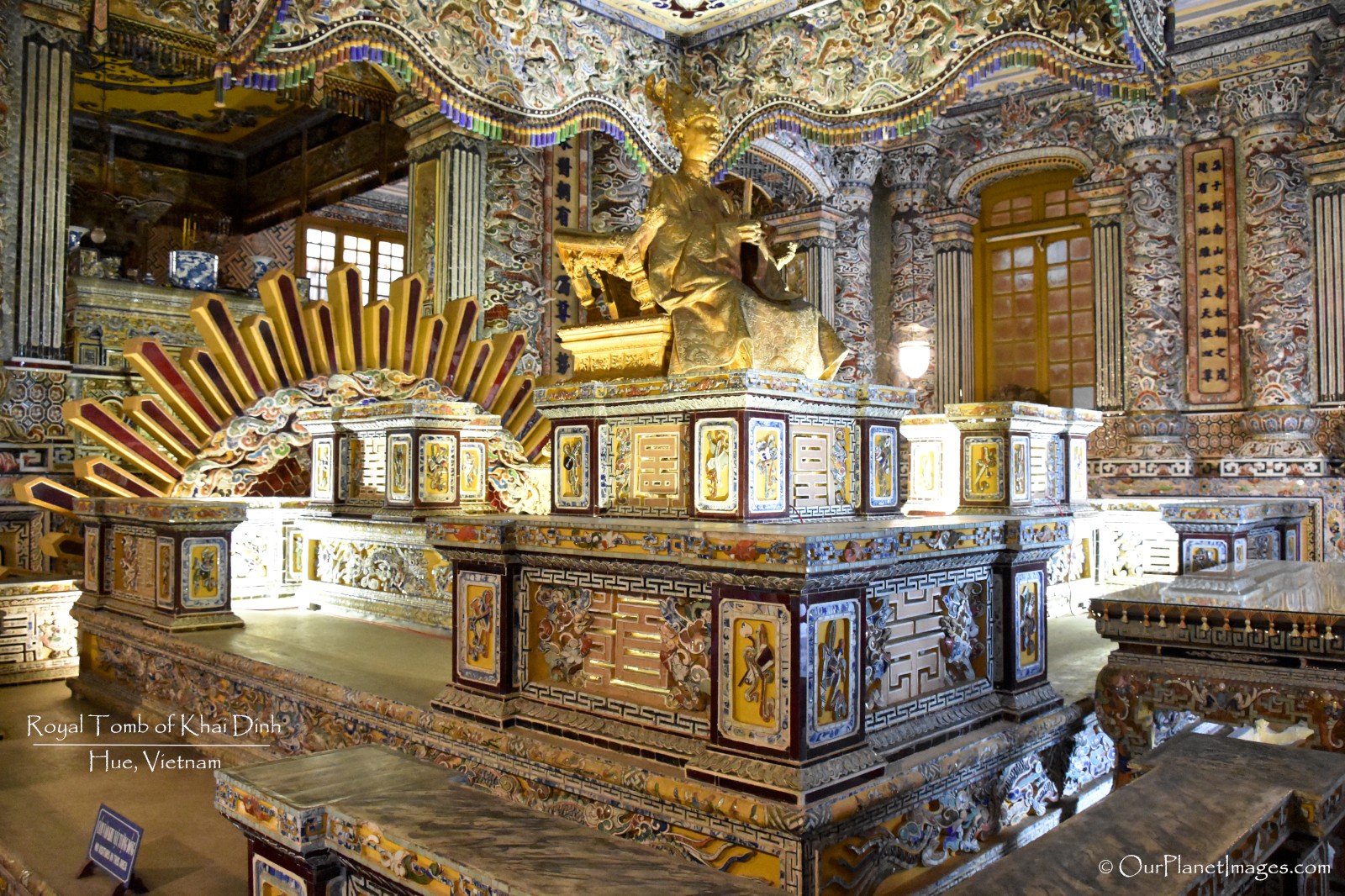
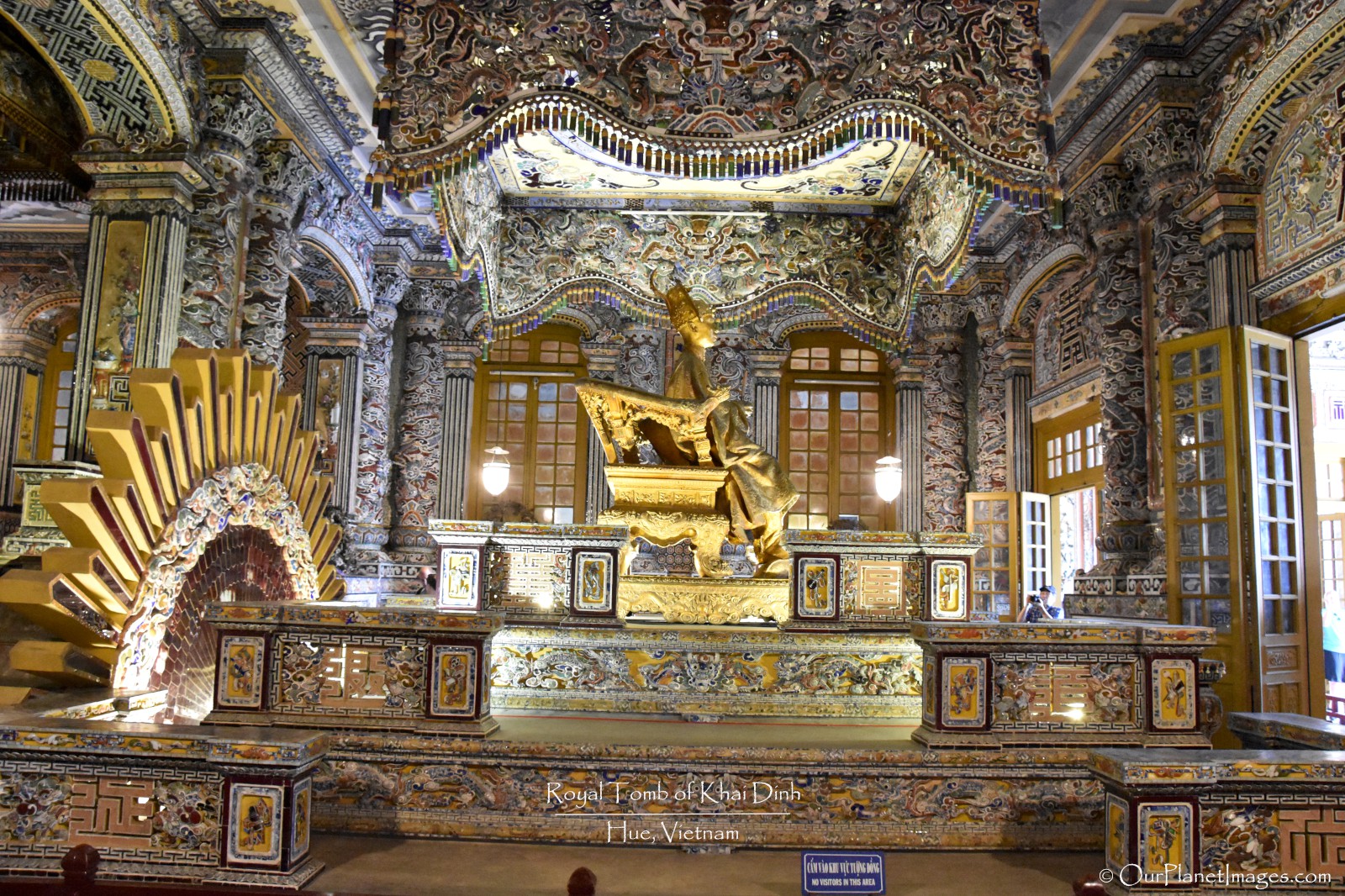
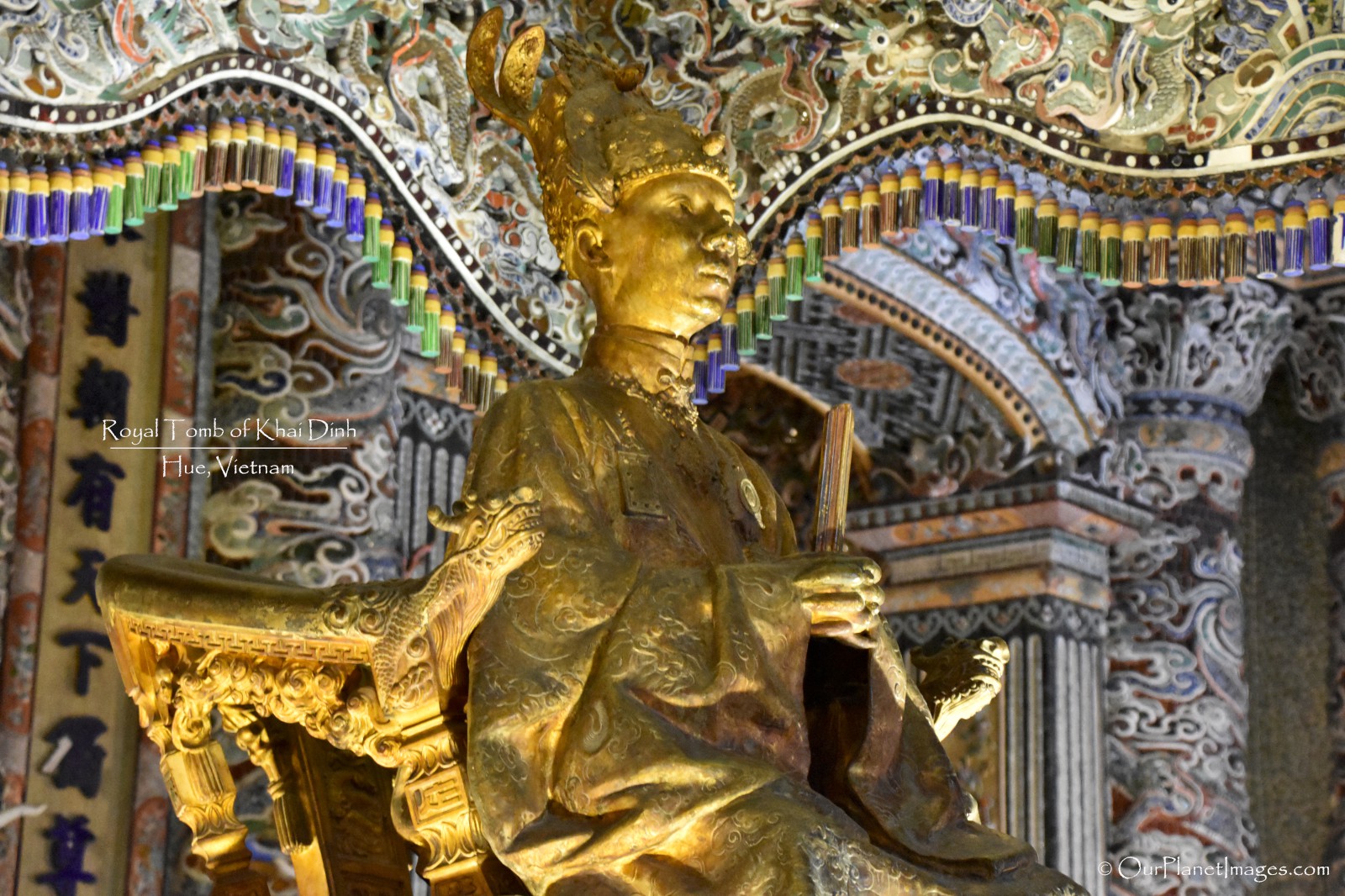
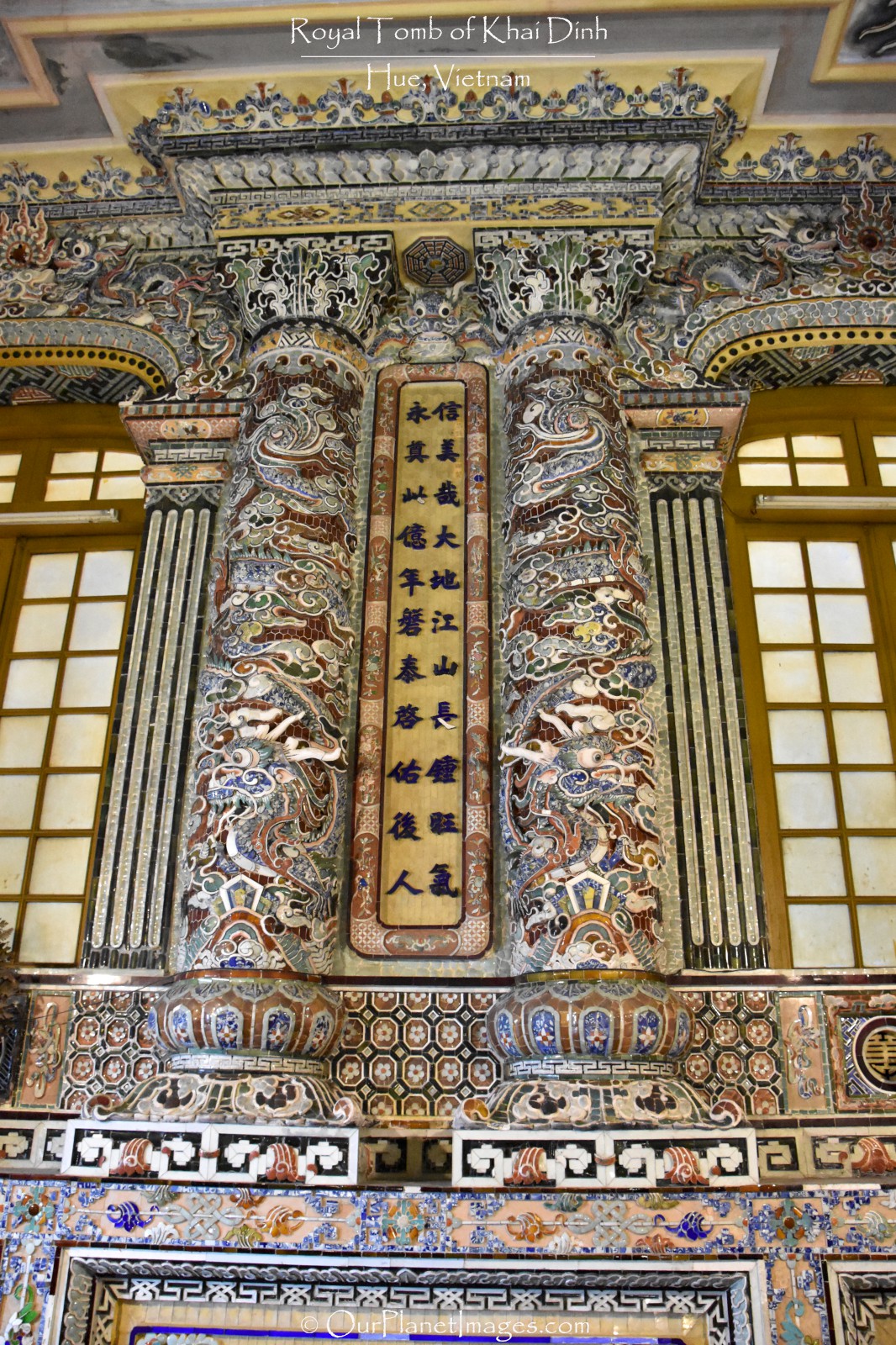
The Dust on My Shoes
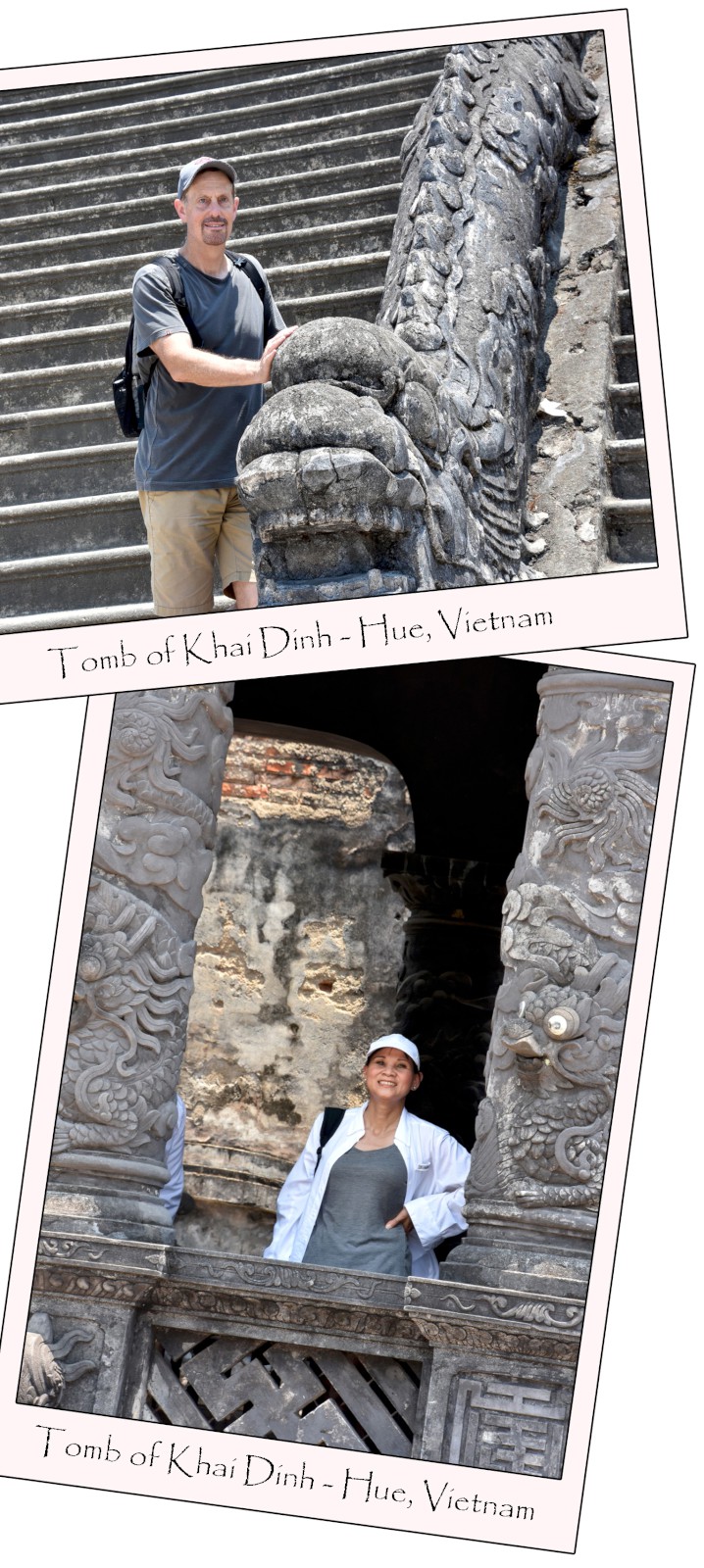
Hue was the seat of the Nguyen Dynasty Emperors. The dynasty lasted from 1802 to 1945 and there were a total of 13 emperors. Many of the emperor’s tombs are scattered around Hue and can be visited.
The tomb of Khai Dinh was my favorite of the tombs that I visited. There are several things that I felt make the Khai Dinh tomb different from some of the other tombs. It is the only complex built on a hillside which separated each section of the complex into tiers with the main building being at the top of the complex. Other tomb complexes are on flat terrain.
The black surface was unique and made for a different effect but the day that I visited the temperature was over 100 degrees F. The black surfaces made it even hotter and some of the surfaces were so hot that I could not touch them for more than a second or two.
The entire complex was in excellent condition and the main building with the crypt was the most ornate of the tombs that I visited.
Visiting an emperor’s tomb is always interesting to me. Most of them are designed and built by themselves before they actually died. It gives a prospective of what was important to them and what they thought of themselves.
